Birthday Month Visit 7/14/2014 With Carri And Greg (Page One)
It's Sue's birthday month and time to visit the gardens.... Actually any excuse will do!

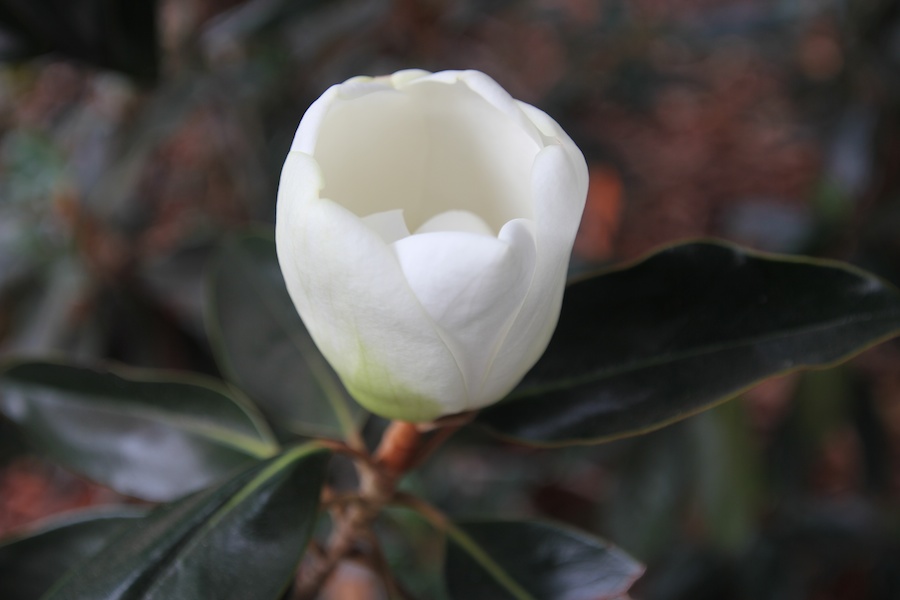
The magnolia's were in bloom at the entrance

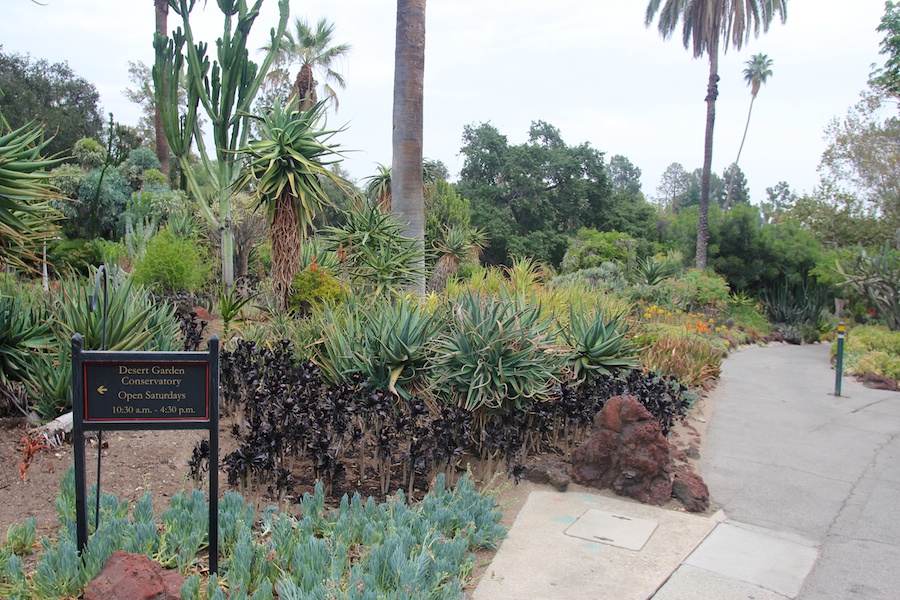
We headed to the cactus/dessert garden first
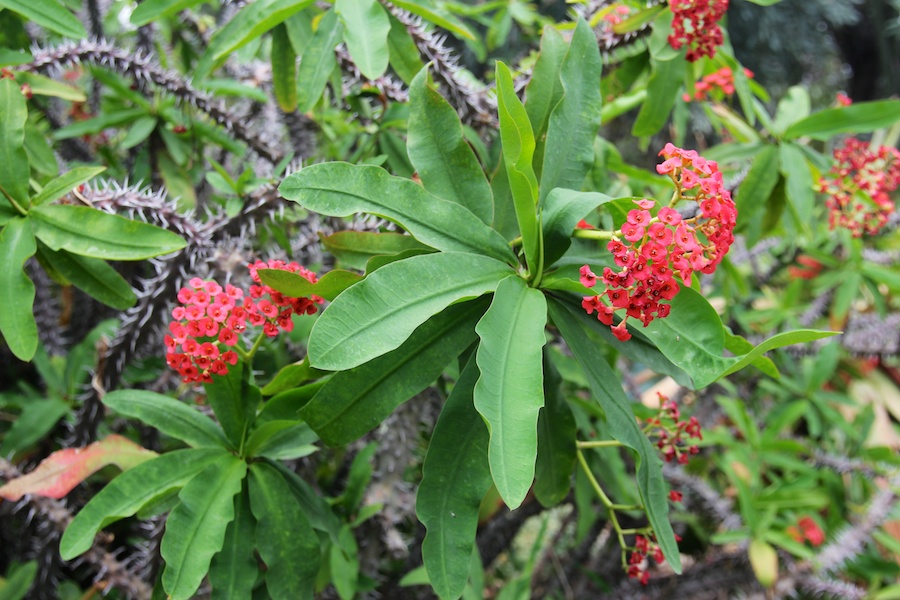
Beauty and the beast.... Red flowers and dangerous limbs
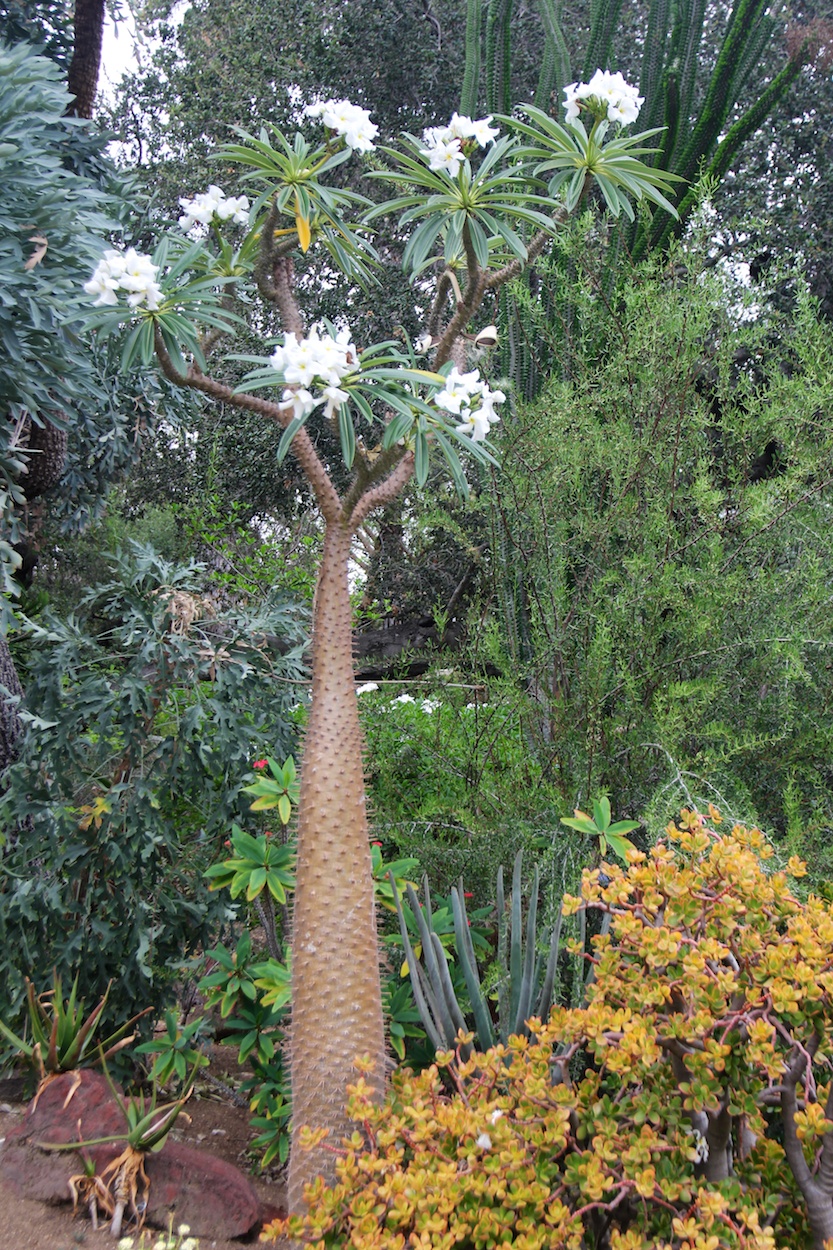
His tummy is stuffed with water
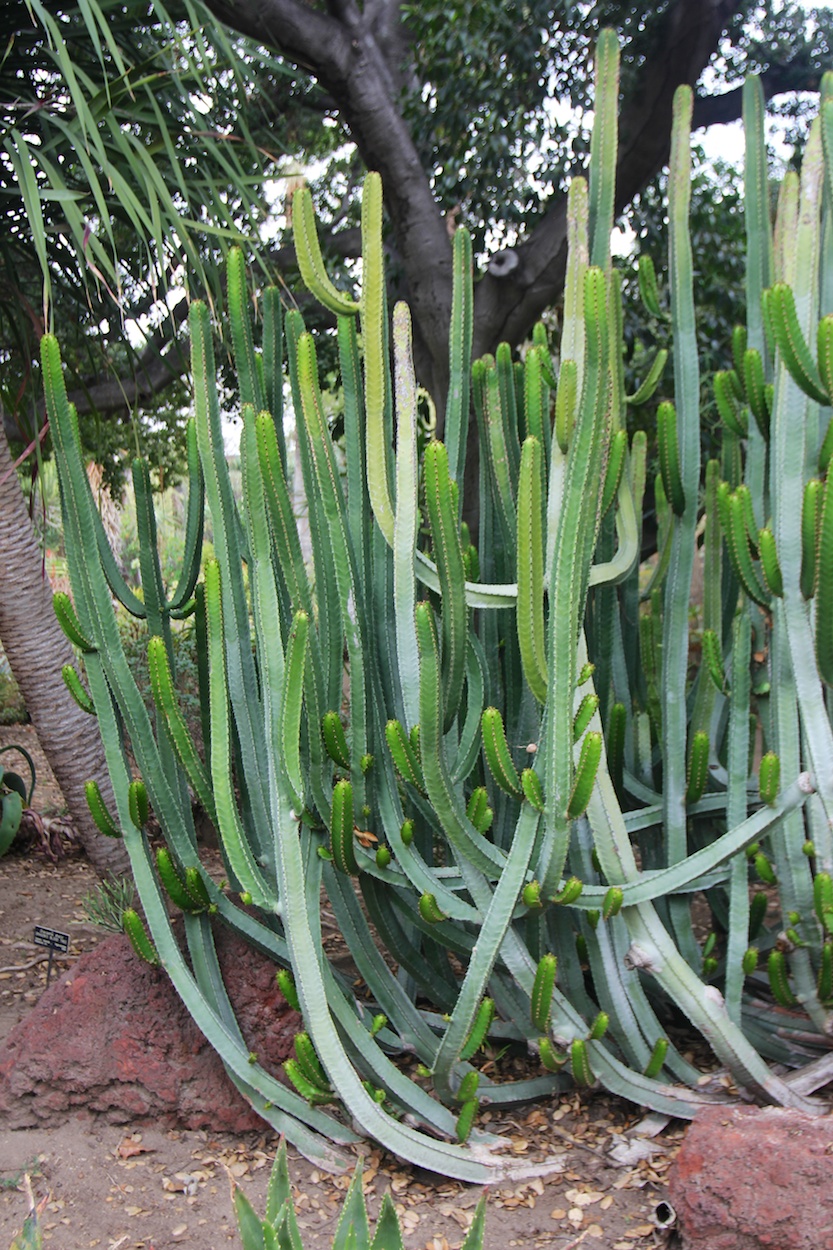
The colors indicate the new growth
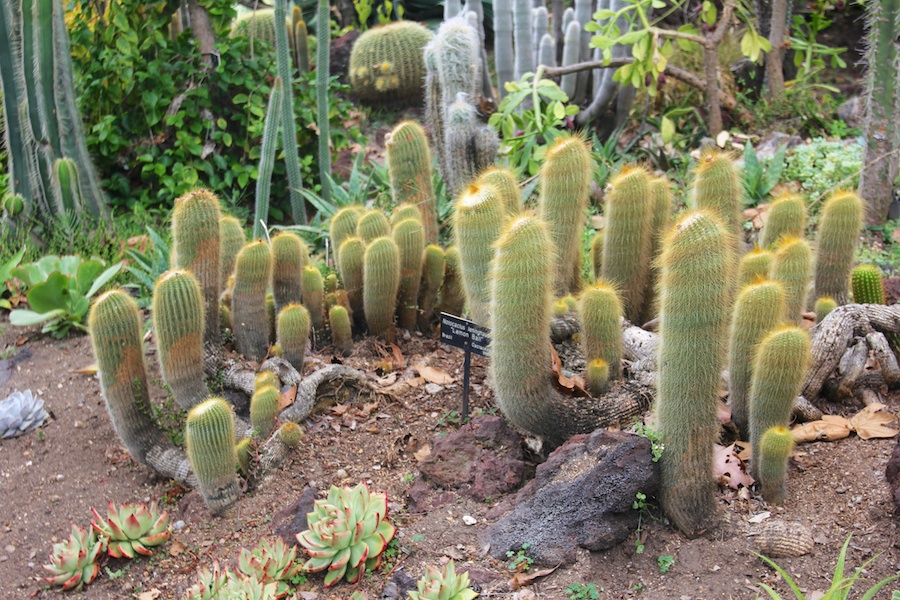
The 27 dwarfs stand and watch

The trunk on this tree will not be limbed
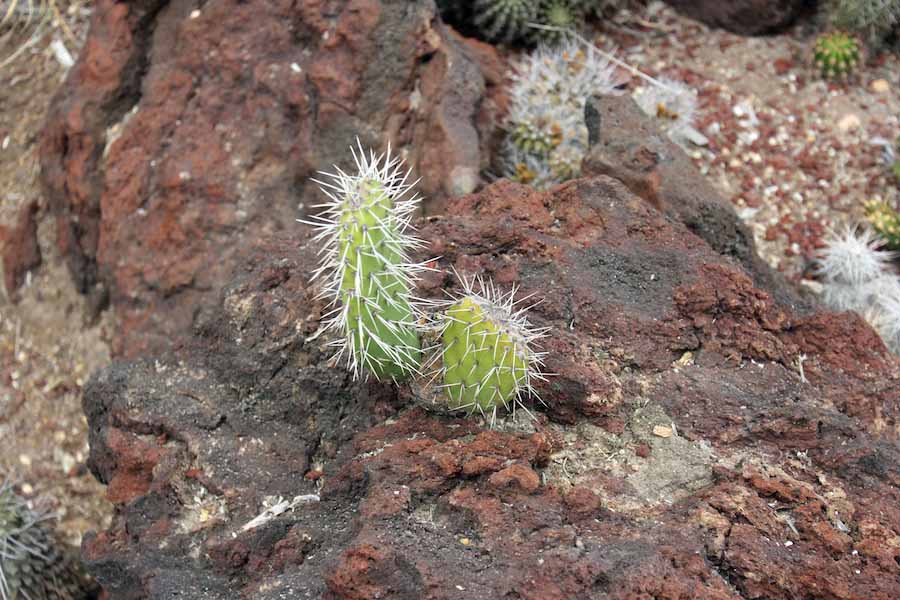
Growing right out of the rock
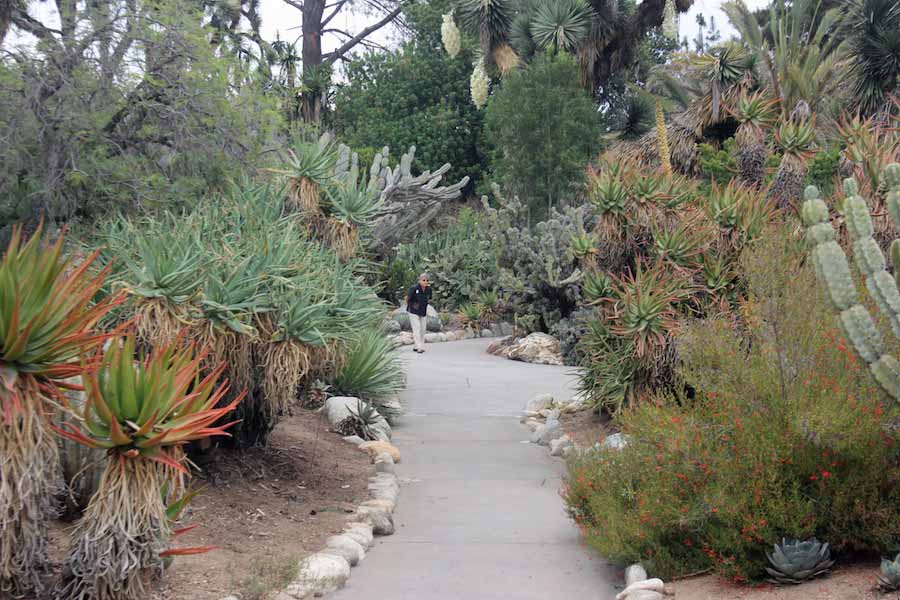
Lost in space
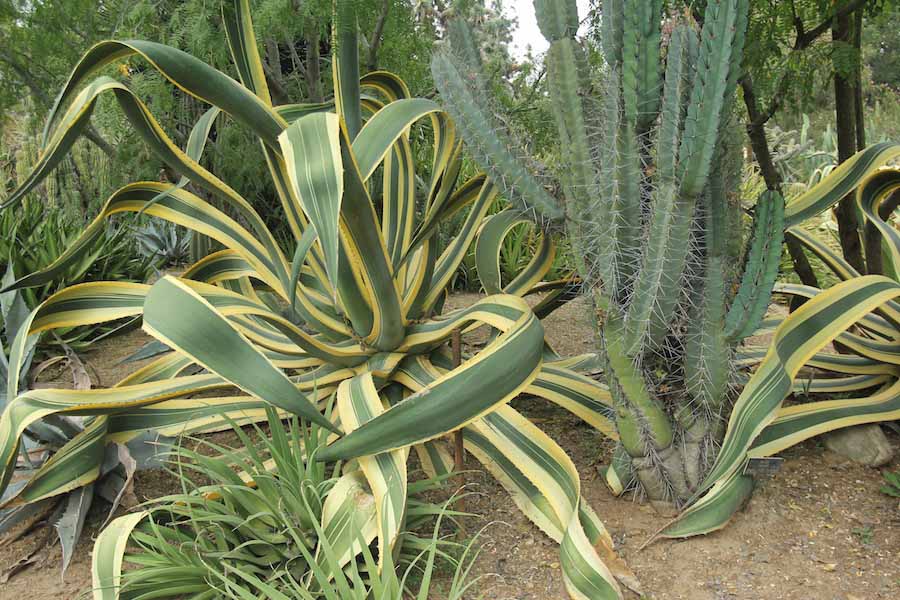
How did these two plants become the way they are??? Just amazing!
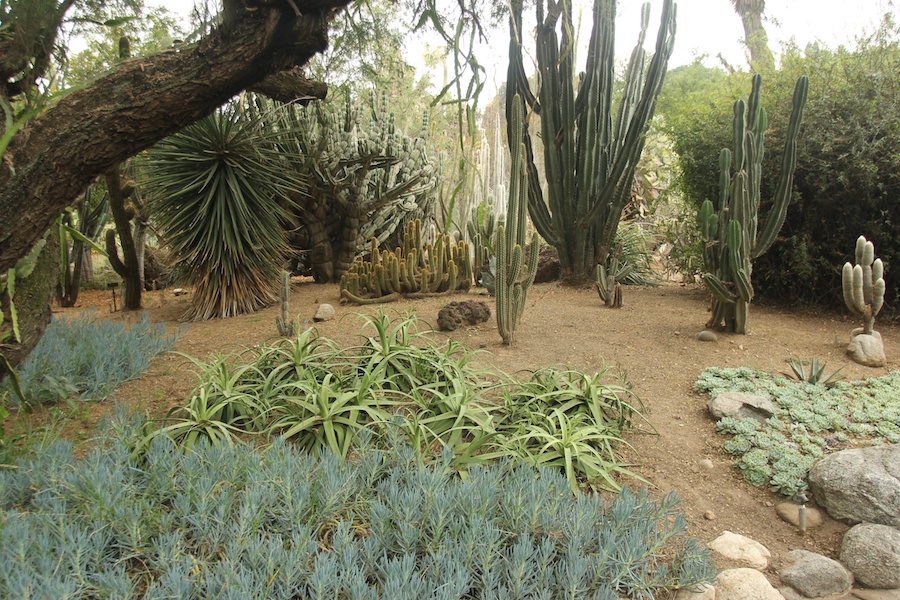
The gardeners keep the grounds looking nice

The blossoms must have a function that deals with the color
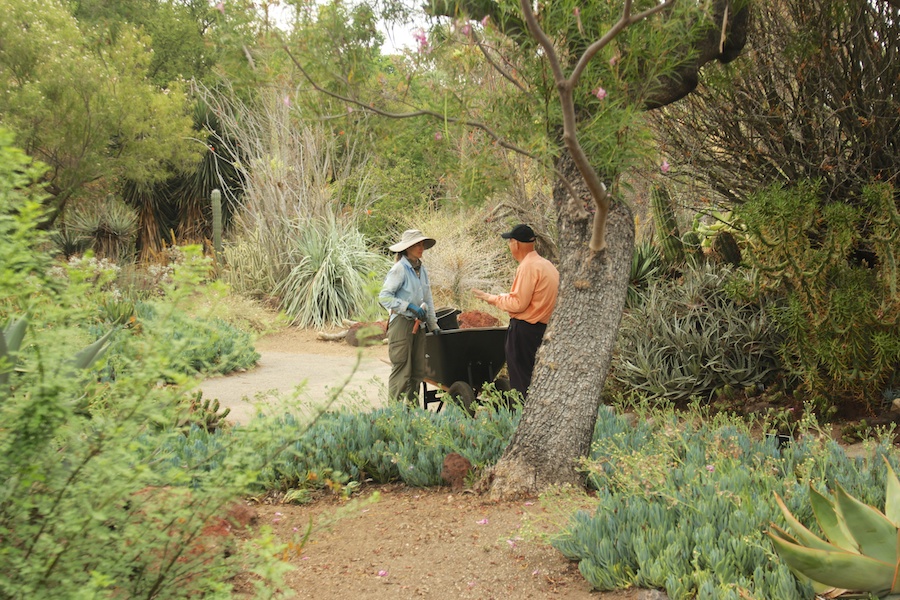
Greg goes off-roading to visit the gardener
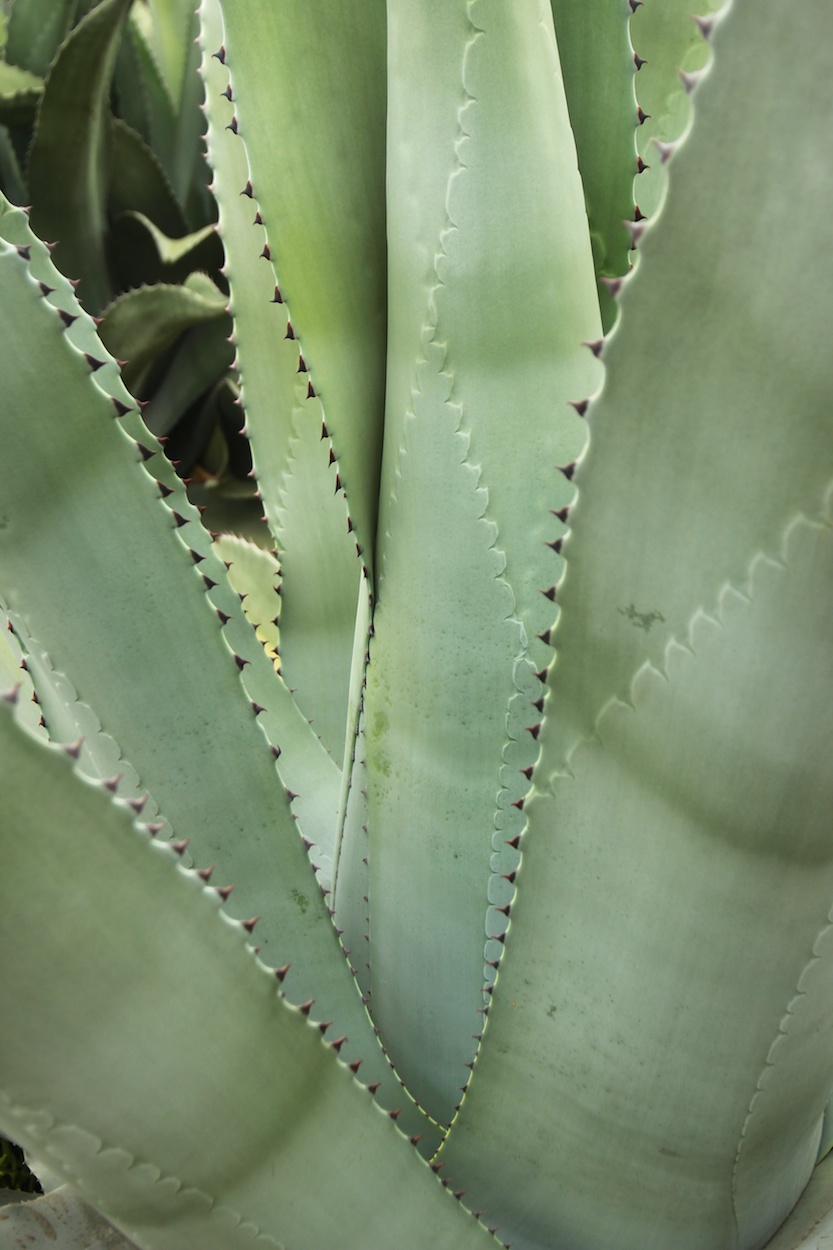
Check the indentations in the leaves where the one next to it was located
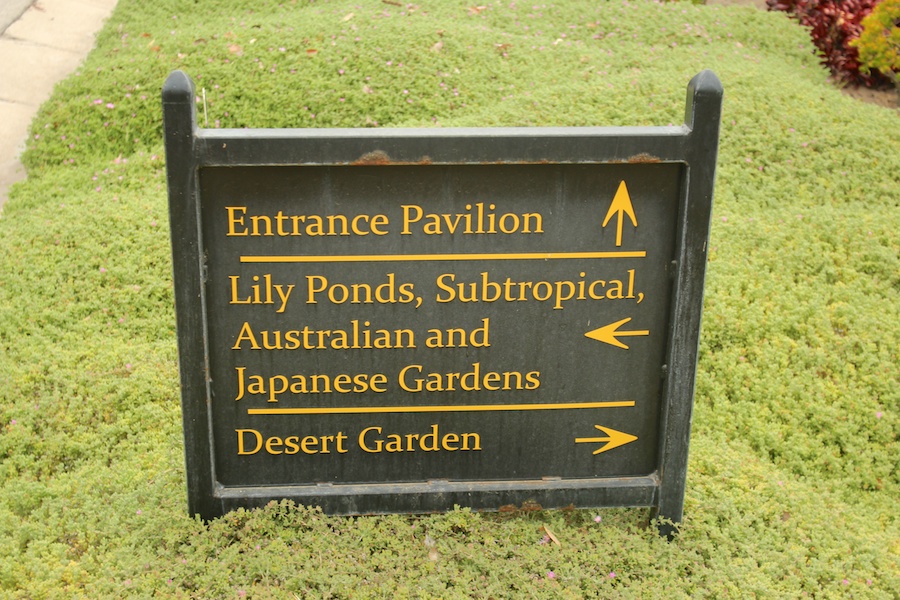
We are doing lily ponds next


The Morning Glory
met us with a smile
Did You Know? - Most morning glory flowers unravel into full bloom in the early morning. The flowers usually start to fade a few hours before the "petals" start showing visible curling. They prefer full solar exposure throughout the day.
Morning glory was first known in China for its medicinal uses, due to the laxative properties of its seeds.
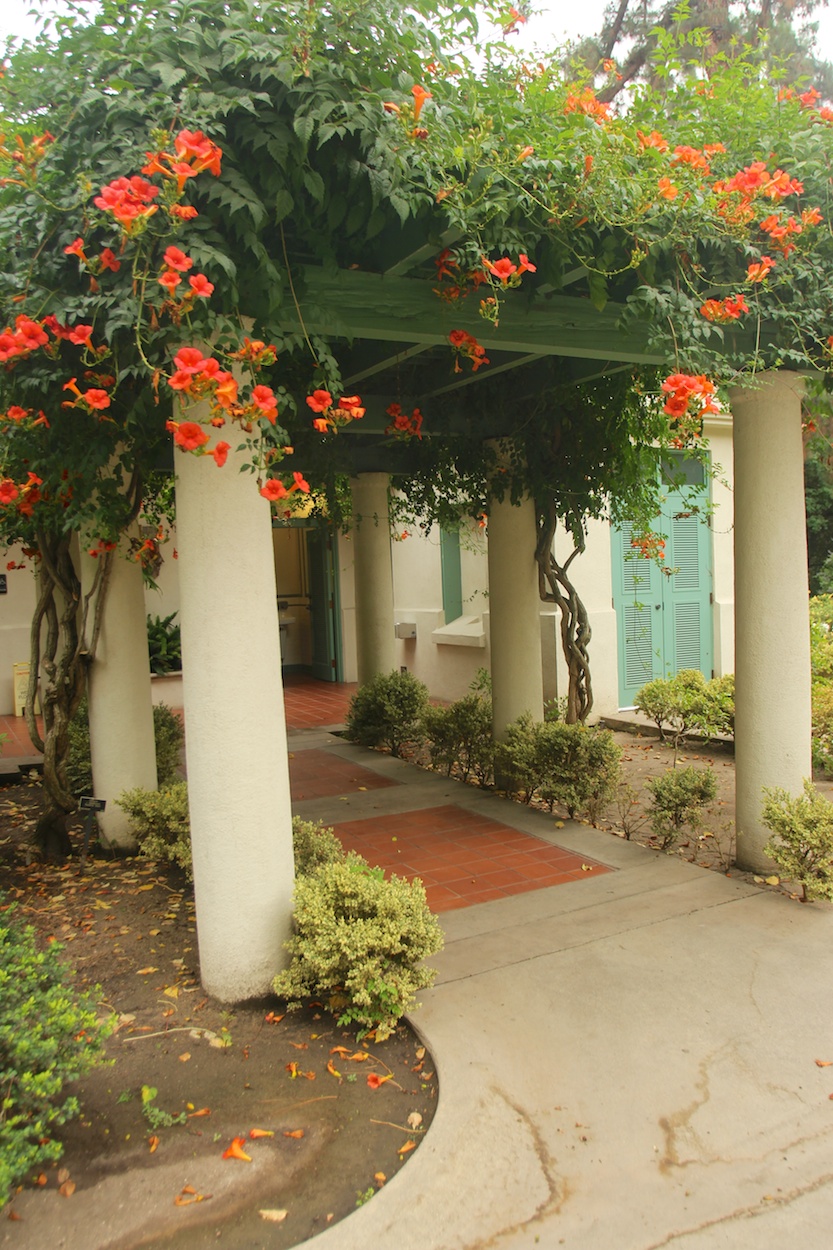
We got a tiny rain shower but didn't need to run indoors
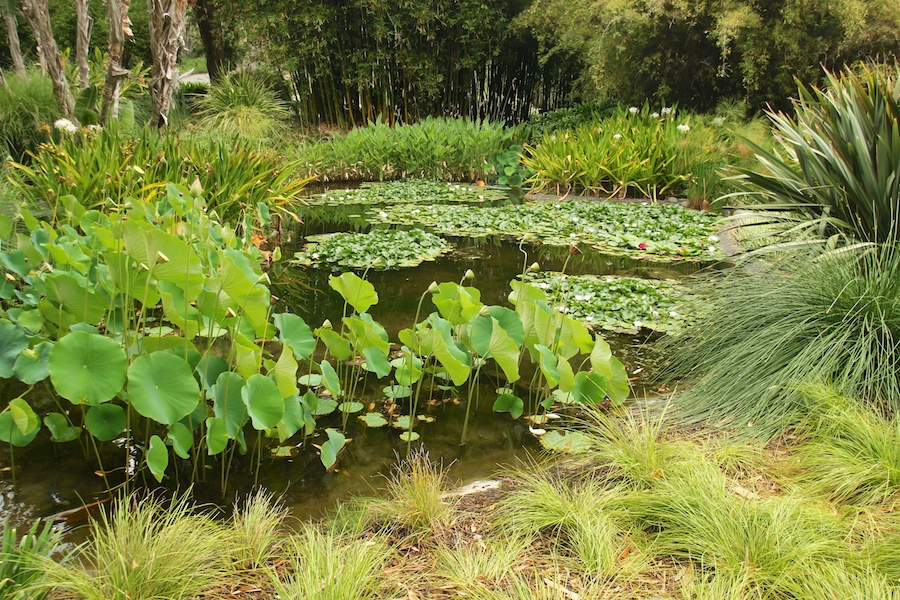
The lily pads were beautiful. Water lilies are rooted in soil in bodies
of water, with leaves and flowers floating on the surface.
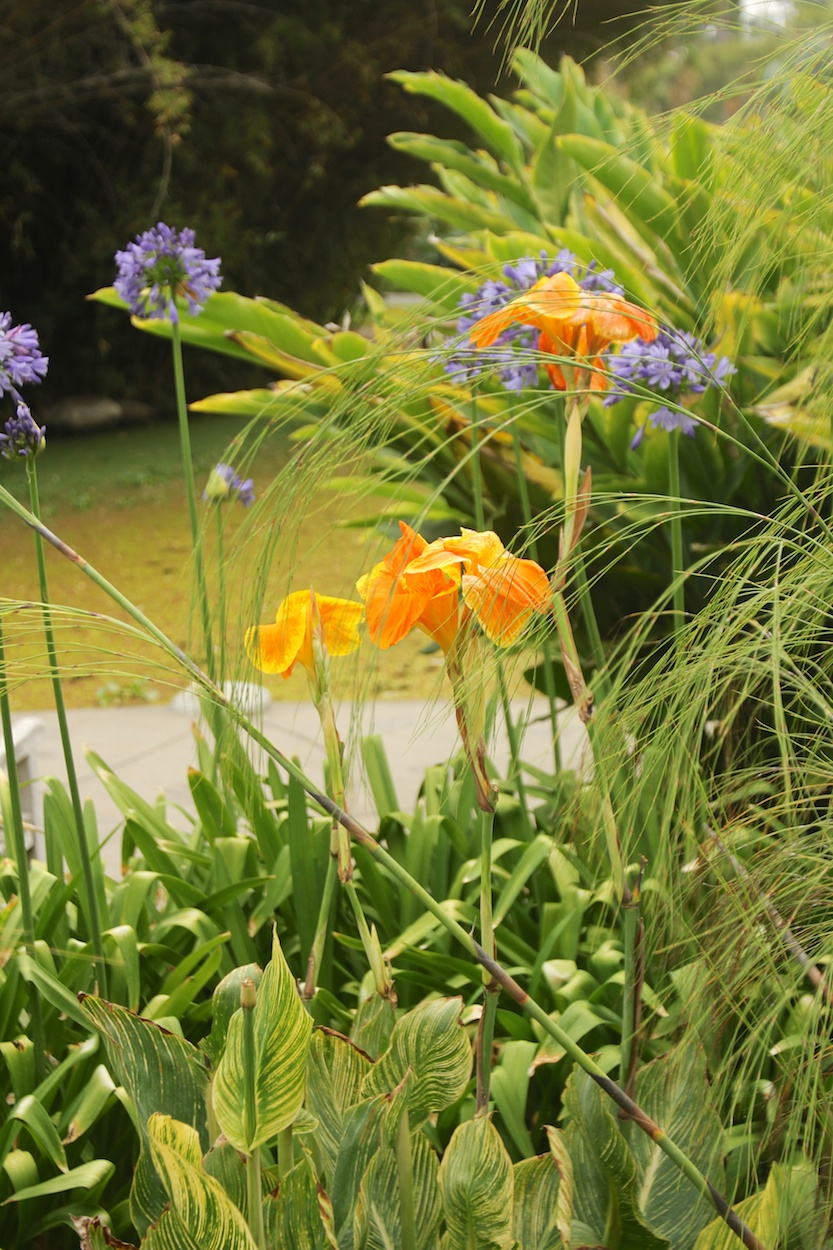
Agapanthus's and other flowers make for a veritable rainbow of colors
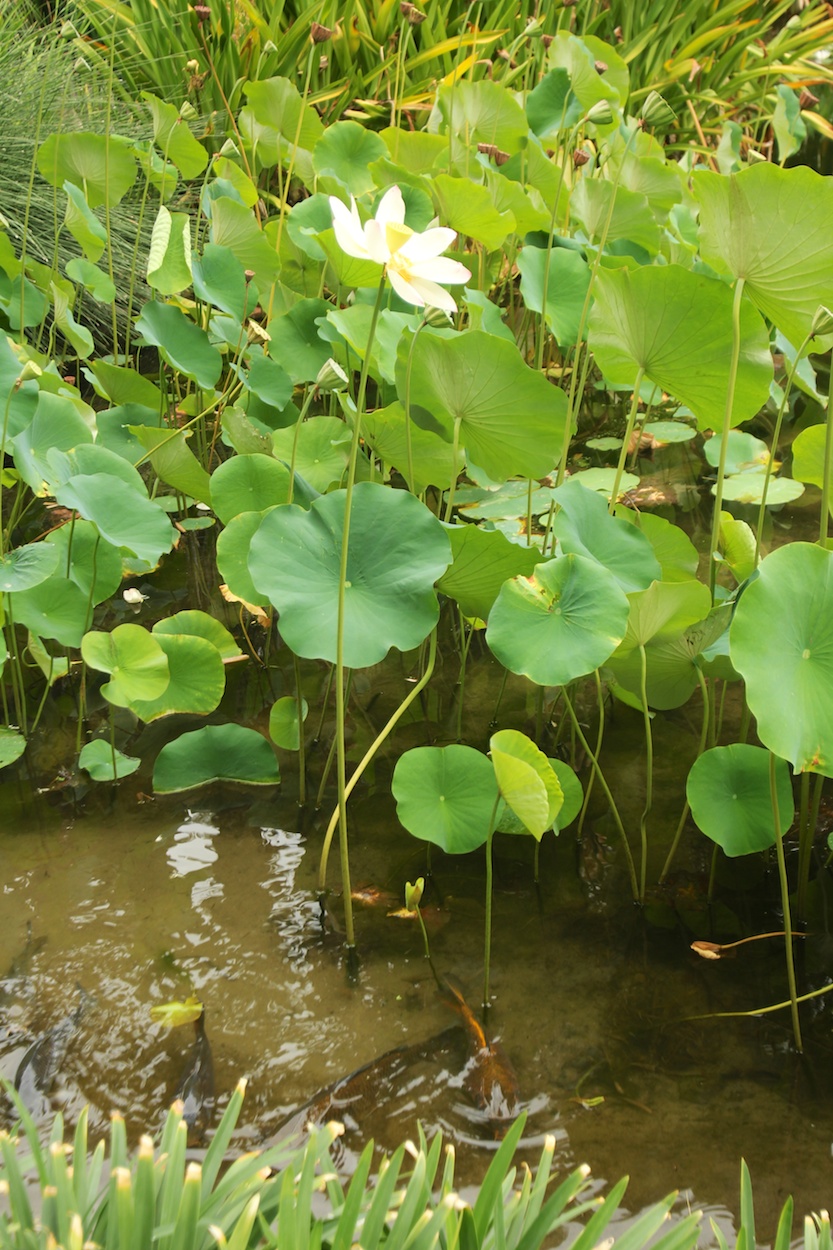
He stuck his head way up high
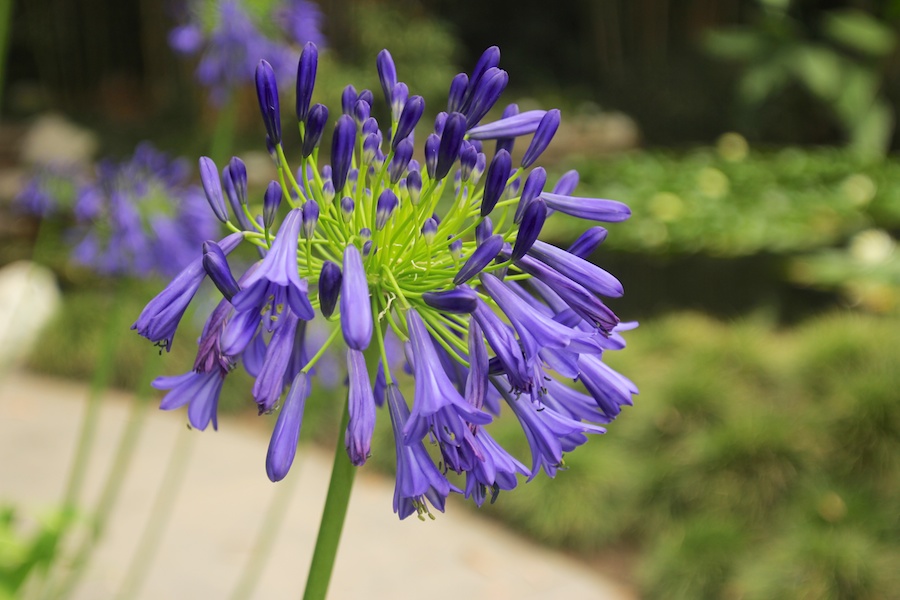
Why blue and purple?
Did You Know? - Flavonoids are the yellow plant pigments seen most notably in lemons, oranges, and grapefruit. The name stems from the Latin word "flavus," which means yellow. Flavonoids in flowers and fruit provide visual cues for animal pollinators and seed dispersers to locate their targets.
Flavonoids are located in the cytoplasm and plastids. Many of the foods that we eat, including dark chocolate, strawberries, blueberries, cinnamon, pecans, walnuts, grapes, and cabbage, contain flavonoids.
These chemicals lower cholesterol levels, and many have antioxidant properties. Anthocyanins and proanthocyanidins, and the reddish-brown pigment theaflavin found in tea, act to create color, while most other flavonoids are visible only under UV light.
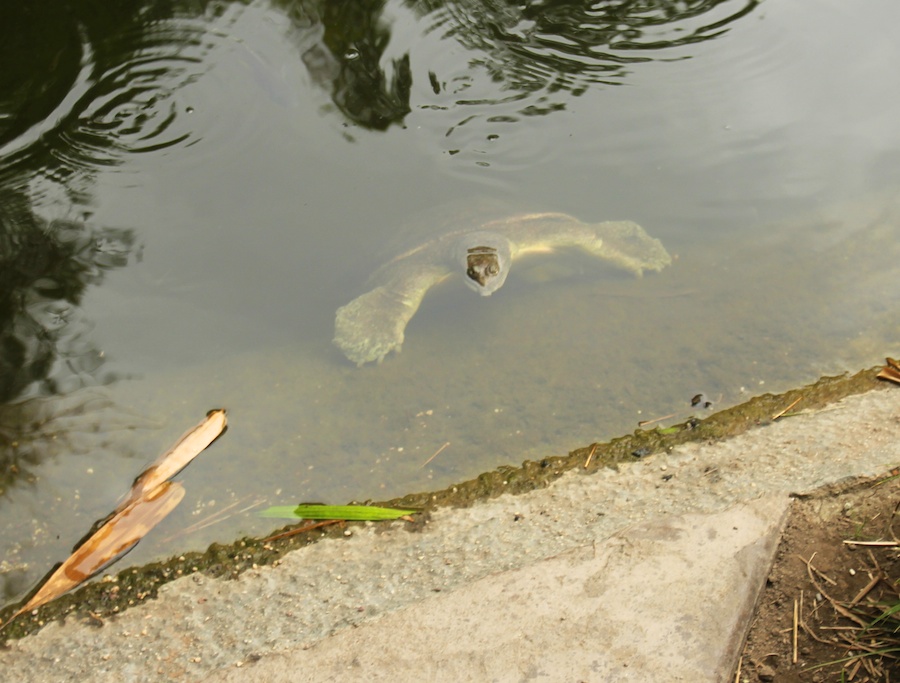
Mr. Turtle is watching us carefully... Only his eyes show
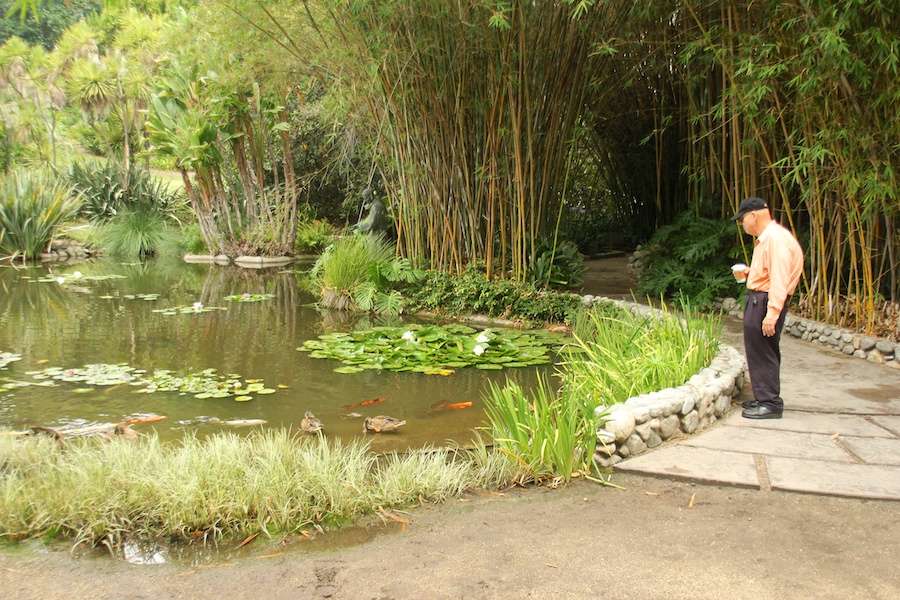
Greg looks for other wildlife

The ducks and fish seem to be happy together
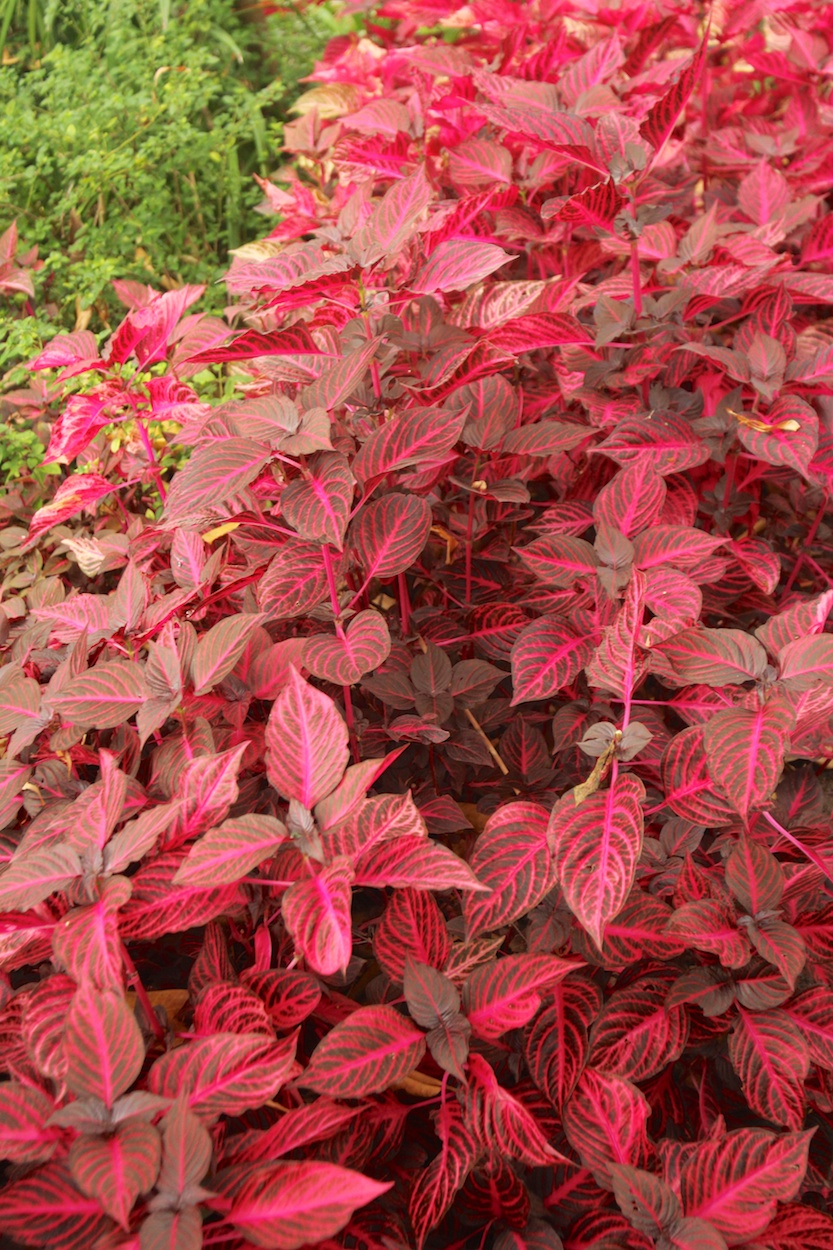
Did anyone say red???
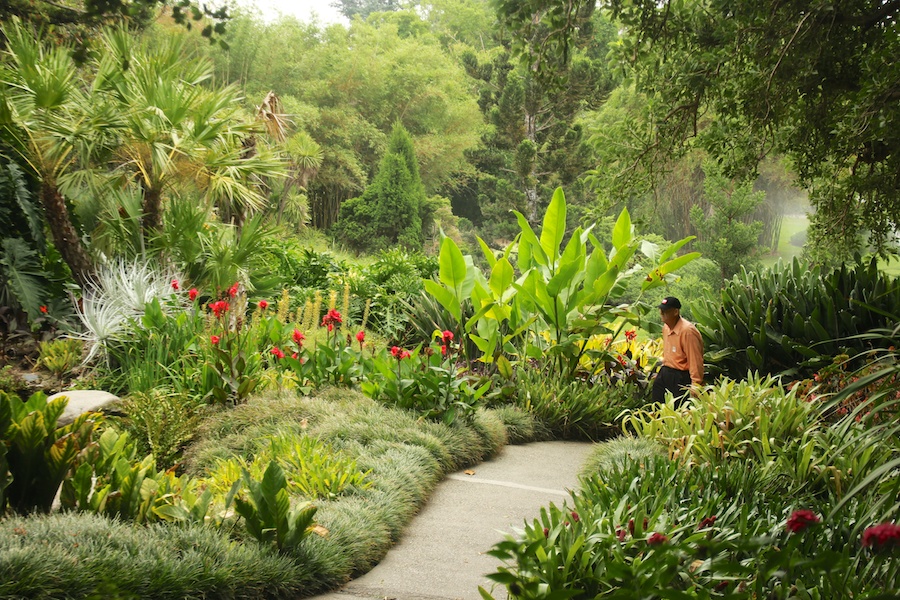
We are walking up the canyon towards to rose garden
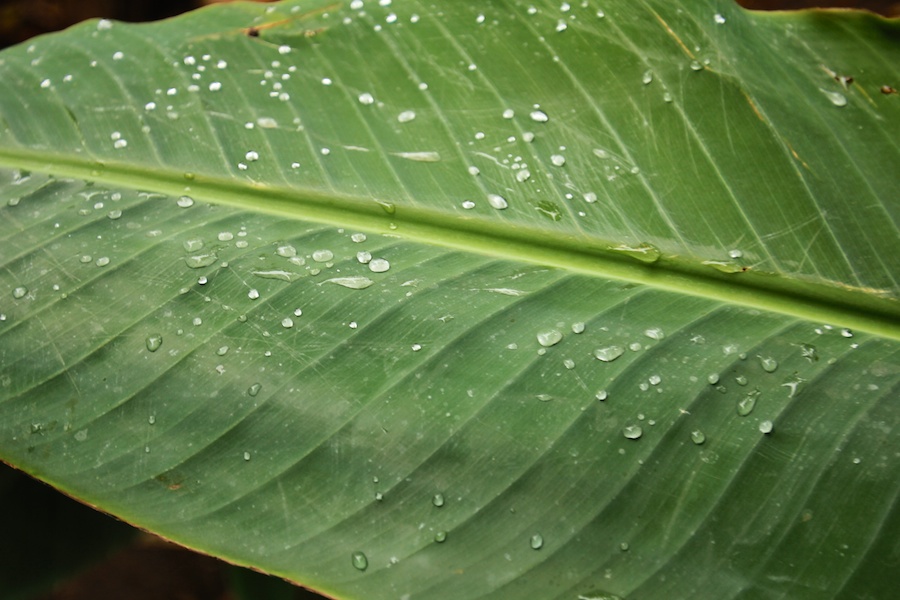
The rain shower watered the leaves and left them clean and full of water
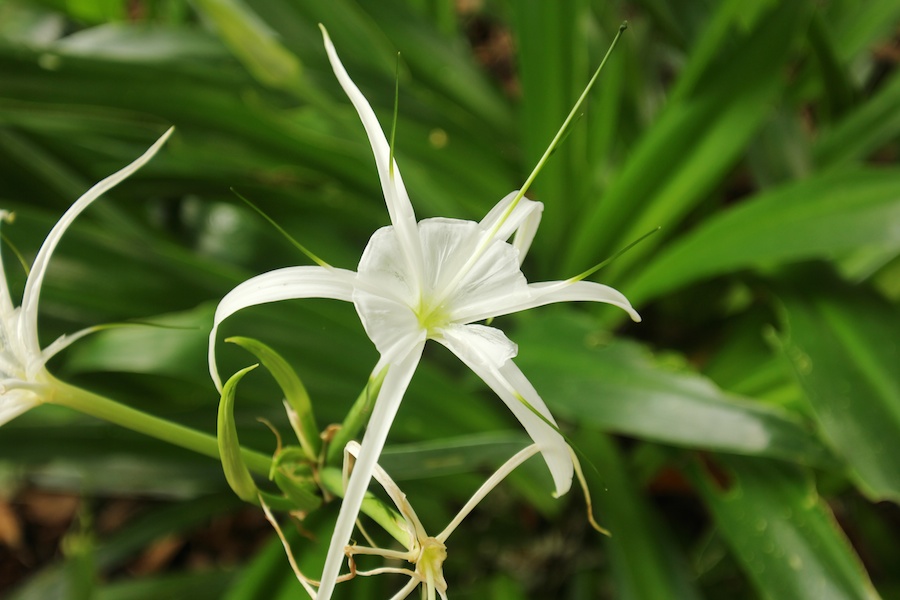
Wild orchid out in the open
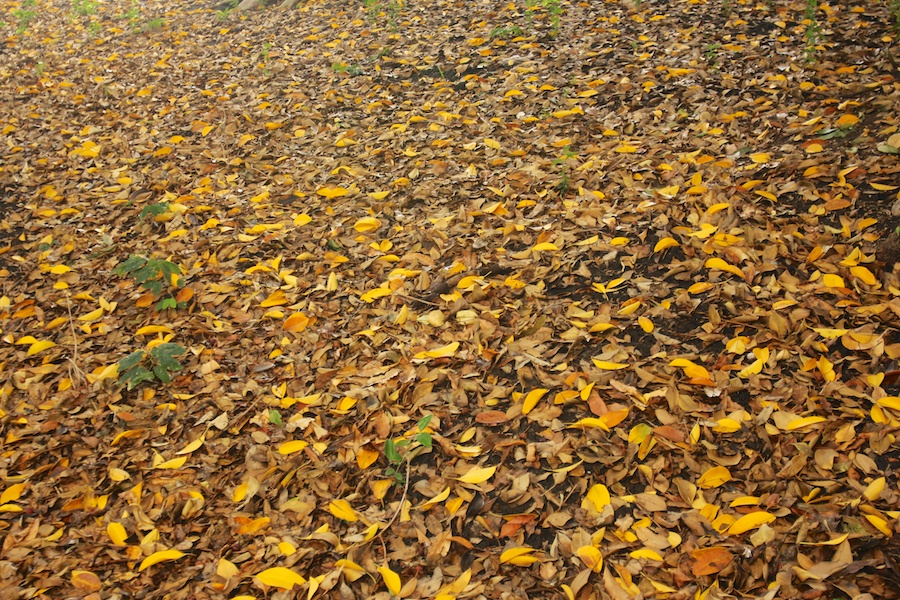
Leave the leaves there... Just beautiful
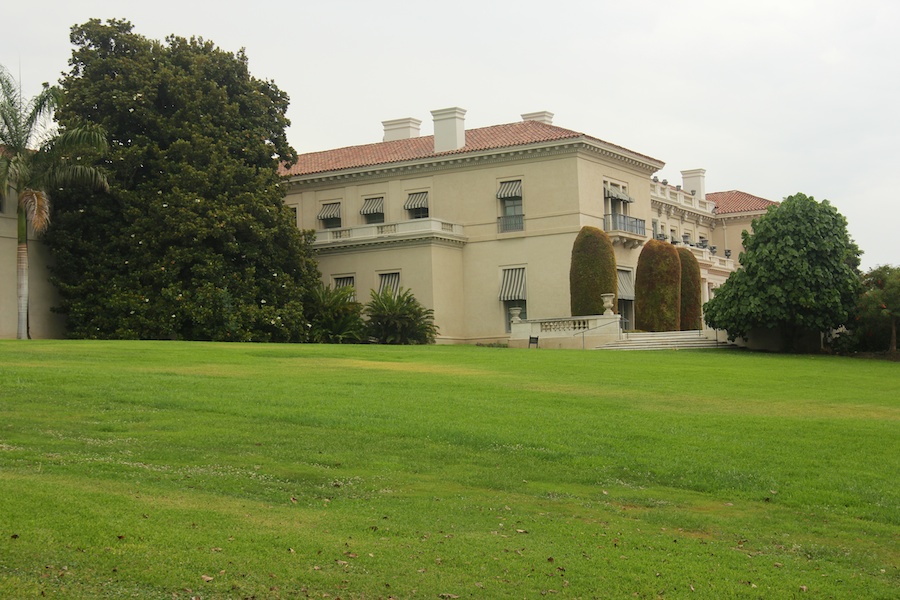
The house finally appears
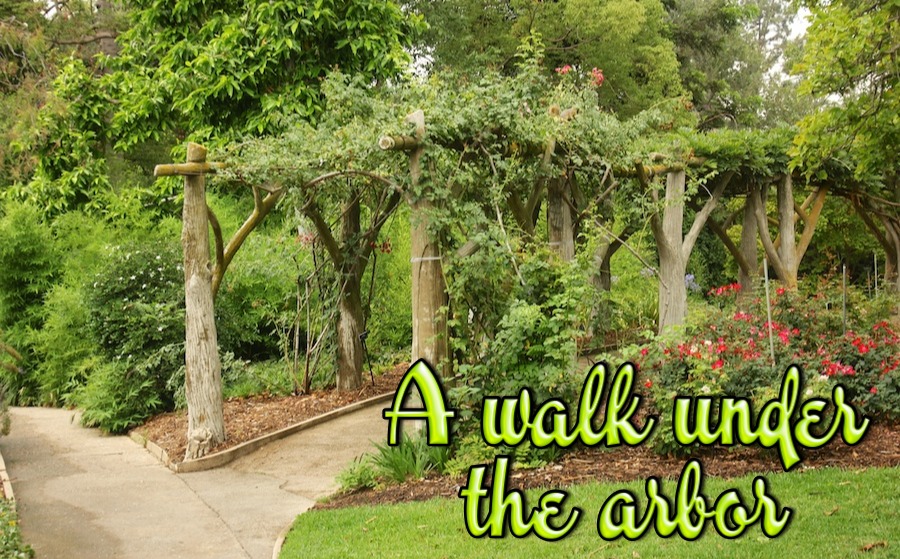
We took the arbor path to the rose garden
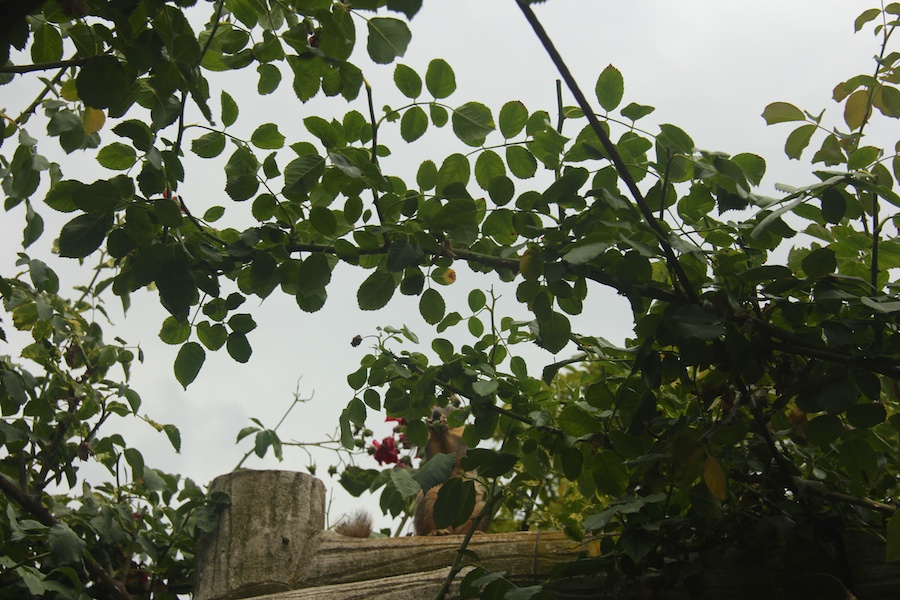
Look carefully.... What do you see?
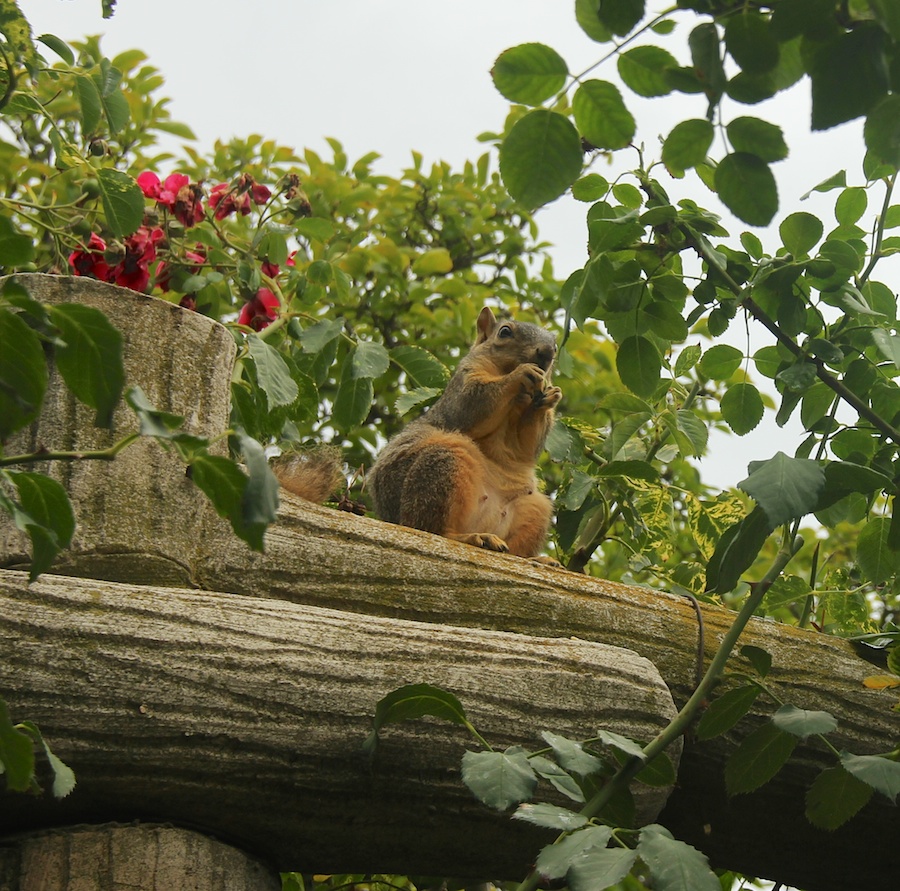
He was real! He was fearless
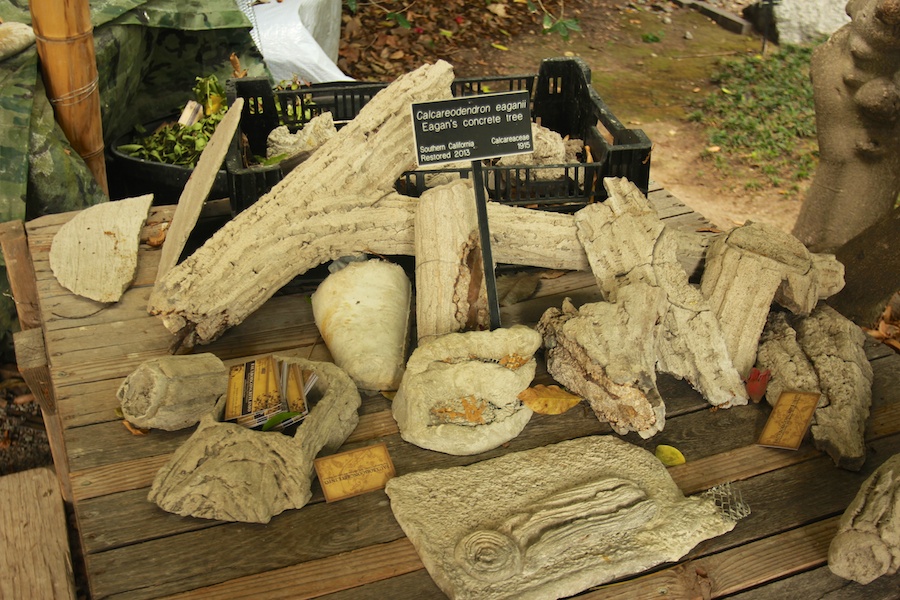
Egan got his own "Official" garden sign for his cement trees
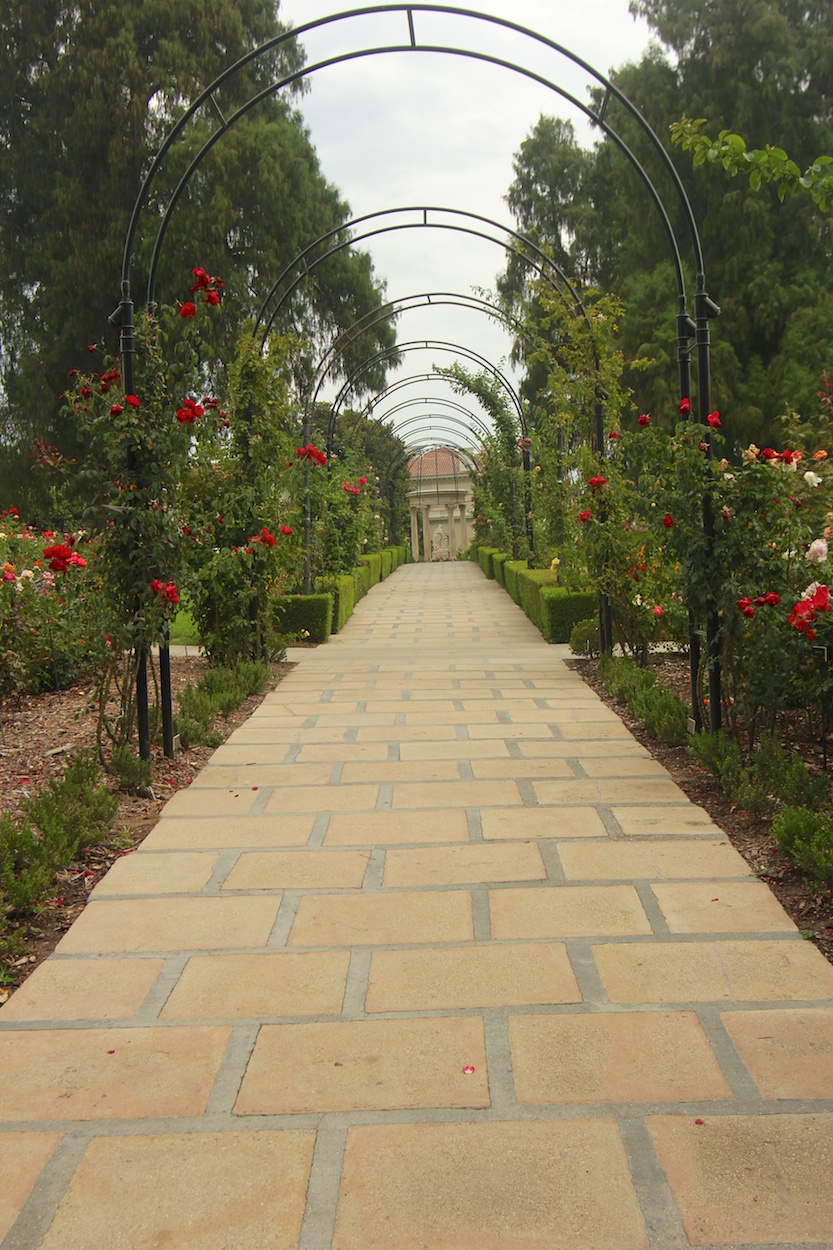
Iron pipe arbors in the rose garden
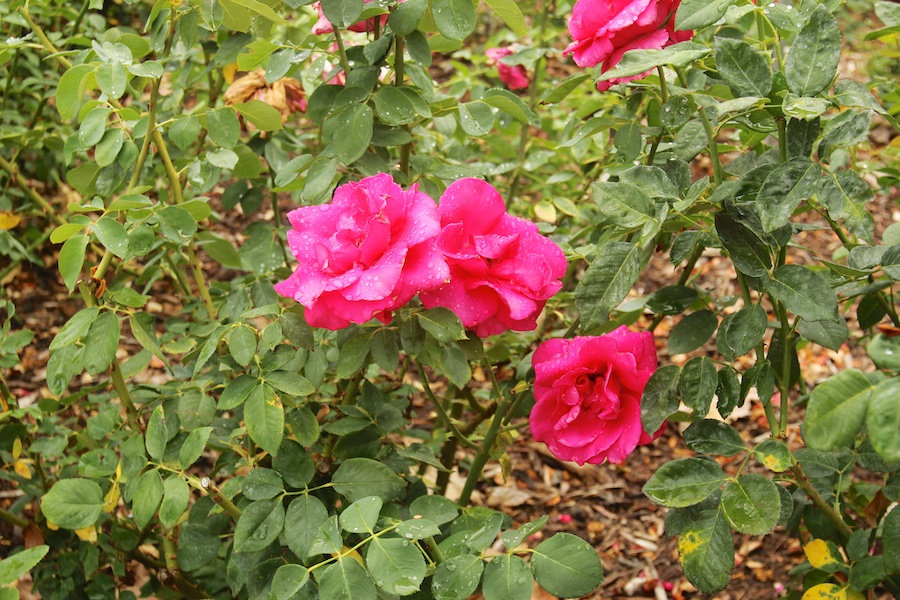
Bright colors everywhere
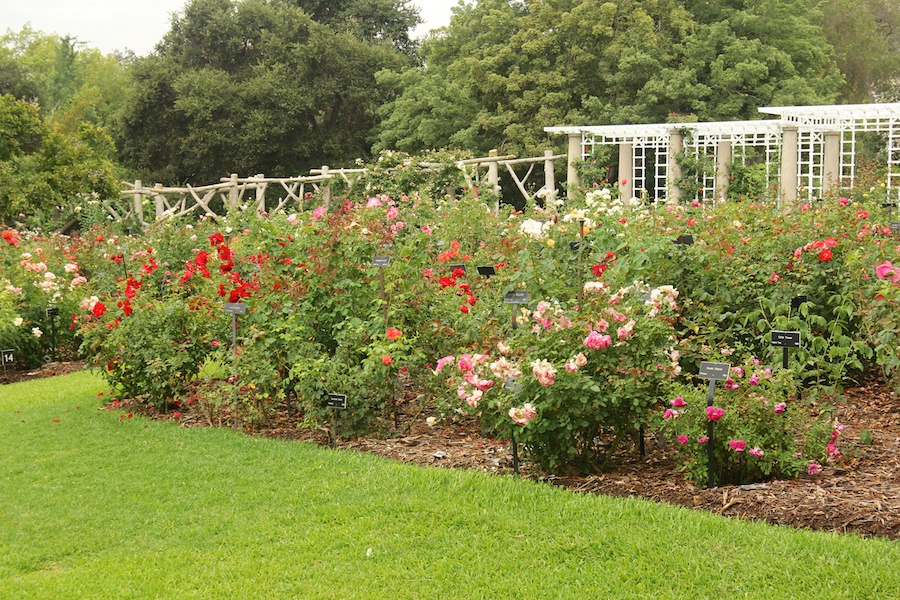
The weather was 76 degrees and about 70 percent humidity...
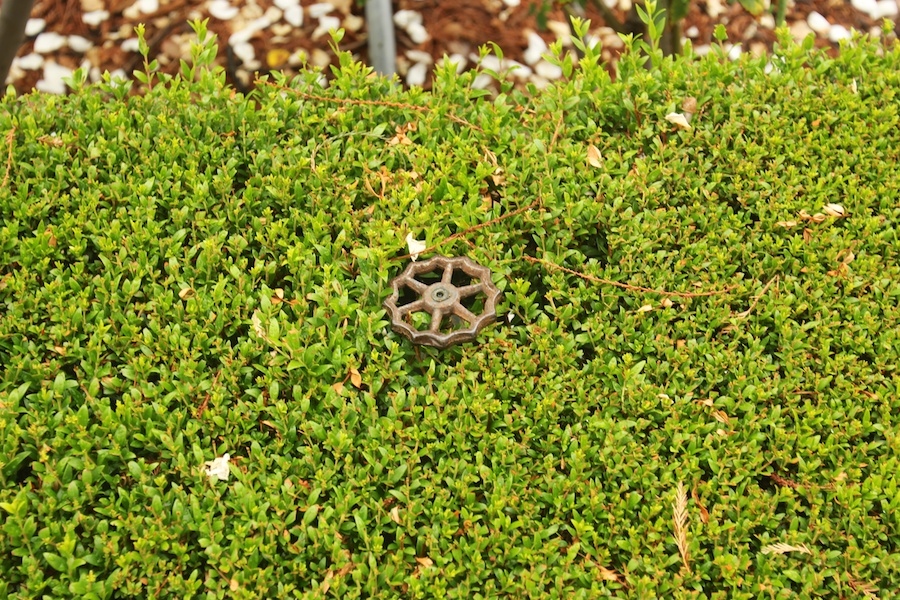
The handle plant..... No! A hose bib is hidden in the box plant
Did You Know? - Owing to its fine grain it is a good wood for fine wood carving, although this is limited by the small sizes available. It is also resistant to splitting and chipping, and thus useful for decorative or storage boxes. Formerly, it was used for wooden combs. As a timber or wood for carving it is "boxwood" in all varieties of English.
Owing to the relatively high density of the wood (it is one of the few woods that are denser than water), boxwood is often used for chess pieces, unstained boxwood for the white pieces and stained ('ebonized') boxwood for the black pieces, in lieu of ebony.
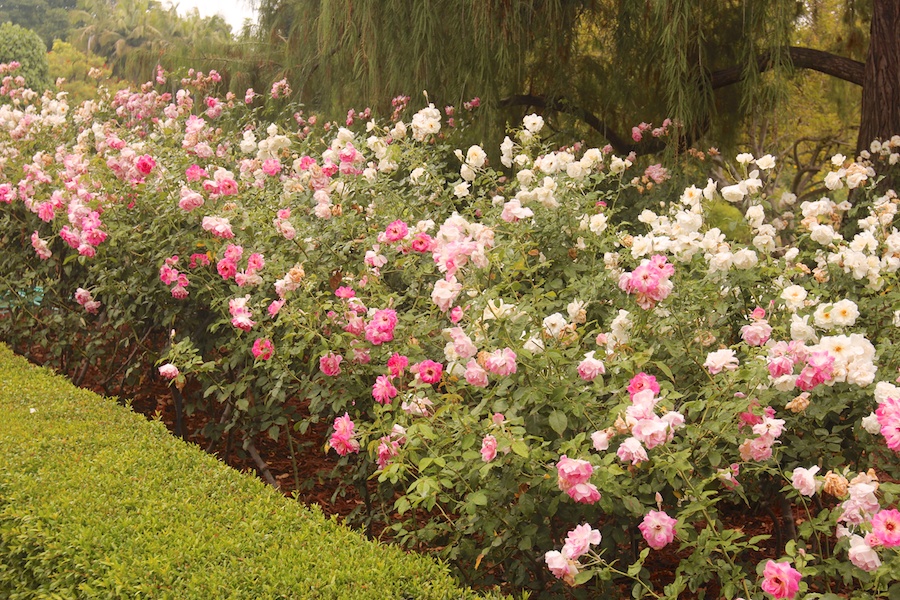
Pinks and whites coexisting together in peace
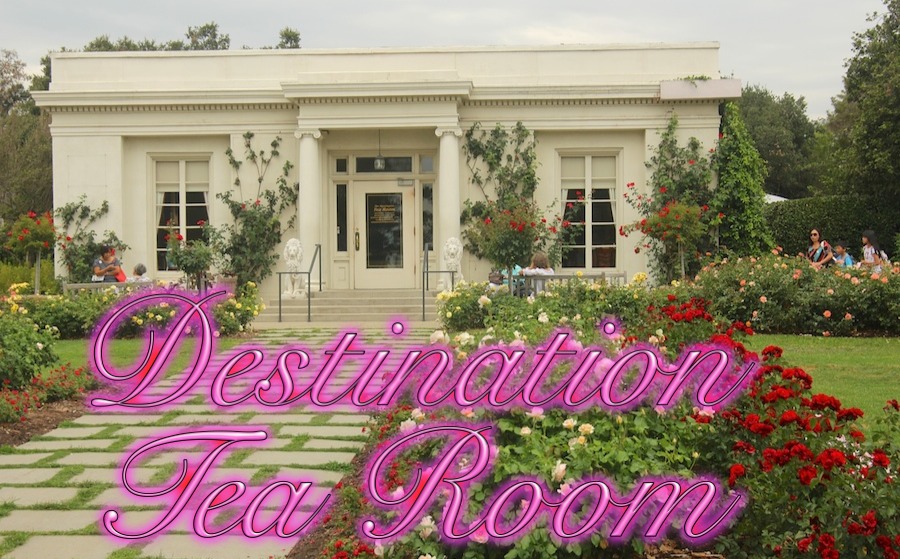

Japanese Beetles enjoying lunch
Did You Know? - The beetle species Populi japonica is commonly known as the Japanese beetle. It is about 15 millimetres (0.6 in) long and 10 millimetres (0.4 in) wide, with iridescent copper-colored elytra and green thorax and head. It is not very destructive in Japan, where it is controlled by natural predators, but in North America it is a serious pest of about 200 species of plants, including rose bushes, grapes, hops, canna, crape myrtles, birch trees, linden trees and others.
It is a clumsy flier, dropping several centimeters when it hits a wall. Japanese beetle traps therefore consist of a pair of crossed walls with a bag or plastic container underneath, and are baited with floral scent, pheromone, or both.
However, studies conducted at the University of Kentucky and Eastern Illinois University suggest beetles attracted to traps frequently do not end up in the traps, but alight on plants in the vicinity, thus causing more damage along the flight path of the beetles and near the trap than may have occurred if the trap were not present.
These insects damage plants by skeletonizing the foliage, that is, consuming only the leaf material between the veins, and may also feed on fruit on the plants if present.
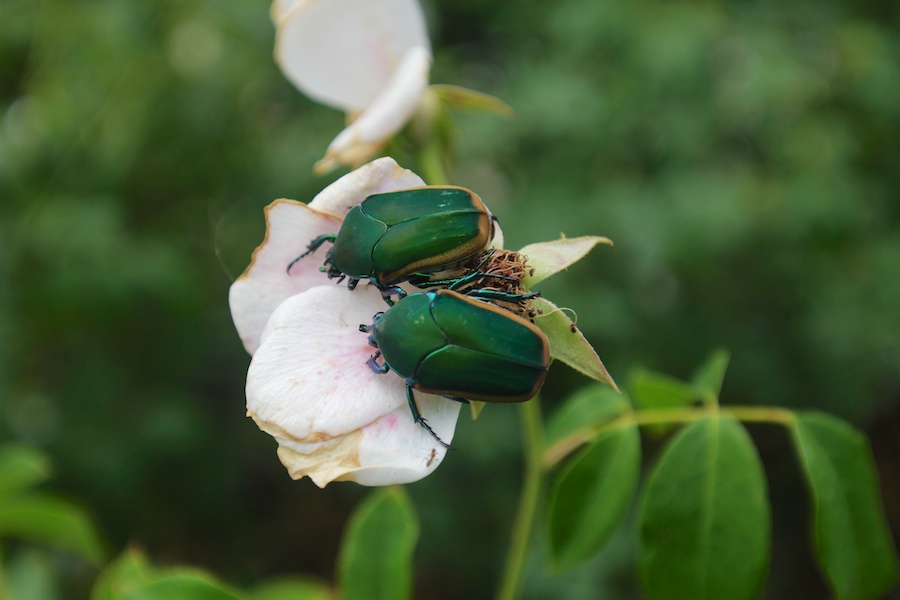
Munch munch munch

Restoration of the statue was successful
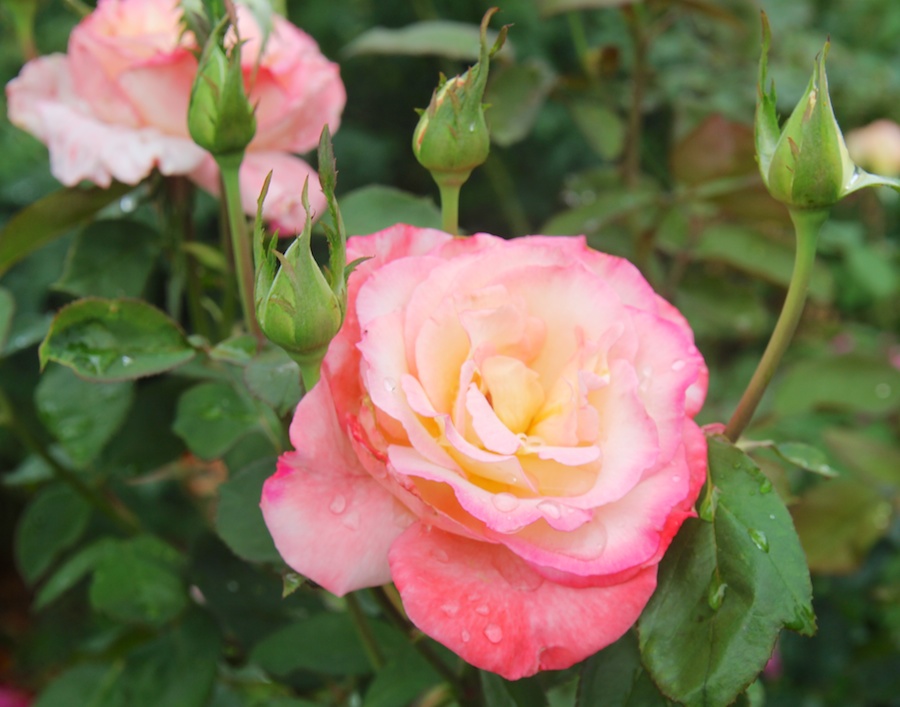
Beautiful
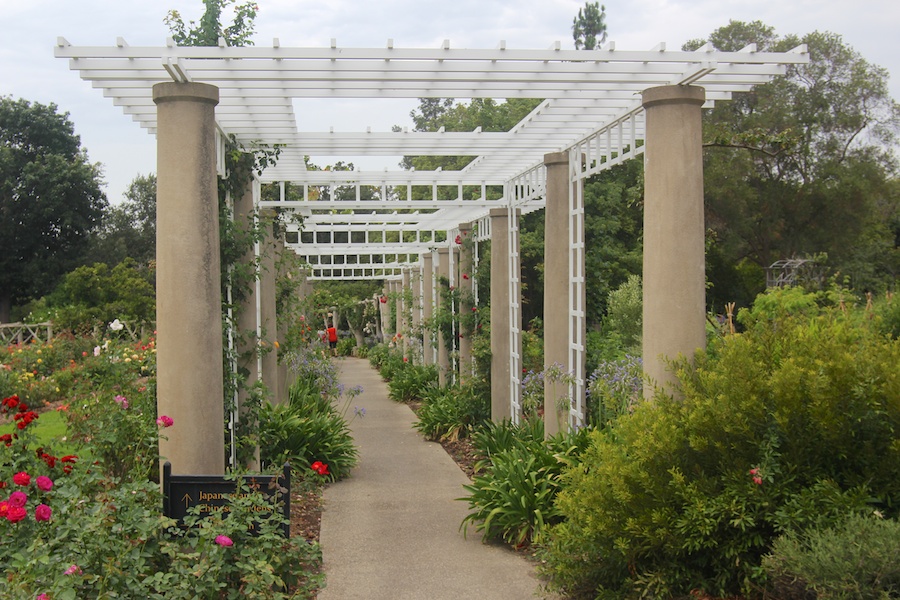
To the right is the "Kitchen Garden"

Did You Know? - The traditional kitchen garden, also known as a potager (in French, jardin potager) or in Scotland a kailyaird, is a space separate from the rest of the residential garden ? the ornamental plants and lawn areas. Most vegetable gardens are still miniature versions of old family farm plots, but the kitchen garden is different not only in its history, but also its design.
The kitchen garden may serve as the central feature of an ornamental, all-season landscape, or it may be little more than a humble vegetable plot. It is a source of herbs, vegetables and fruits, but it is often also a structured garden space with a design based on repetitive geometric patterns.
The kitchen garden has year-round visual appeal and can incorporate permanent perennials or woody shrub plantings around (or among) the annuals.
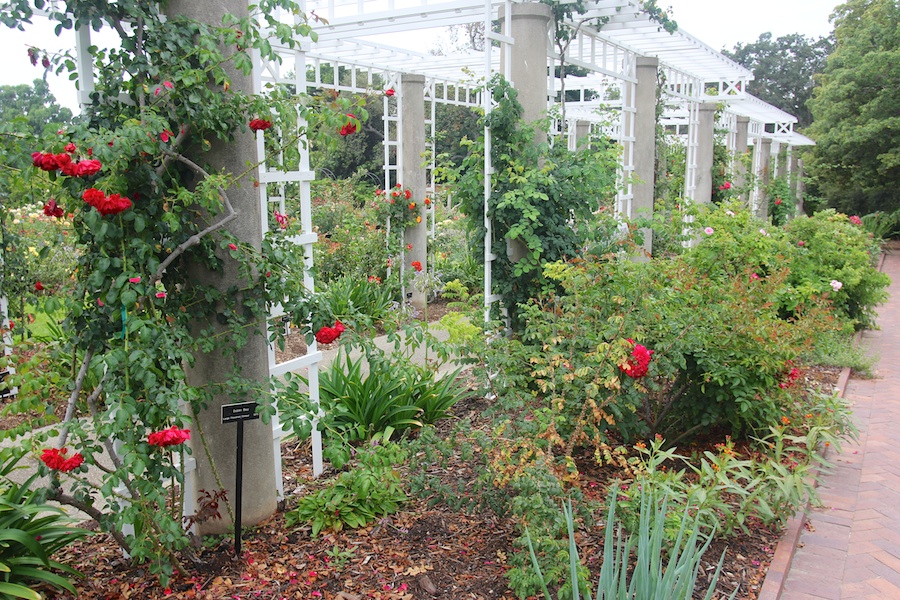
Most everything is edible or used in cooking
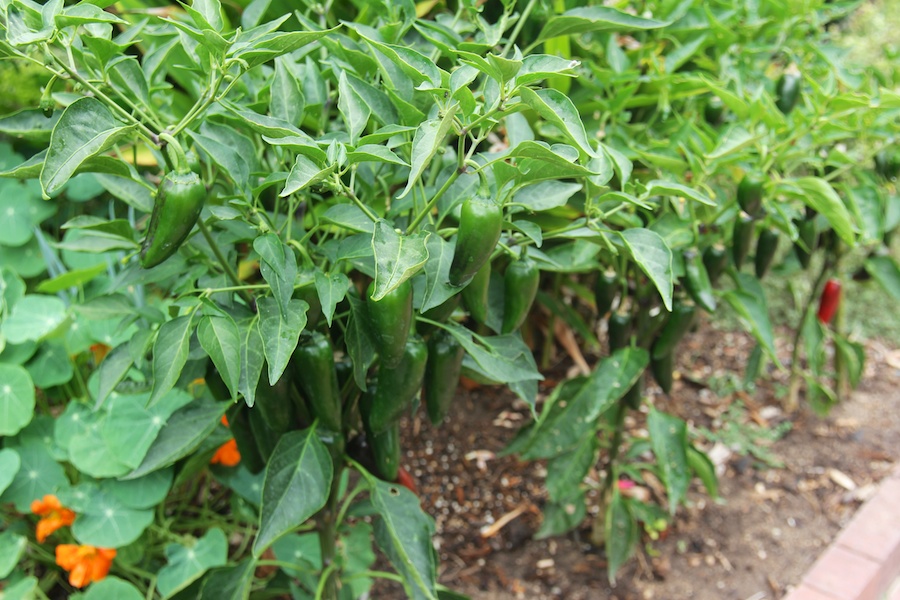
Peppers? Jalapenos galore
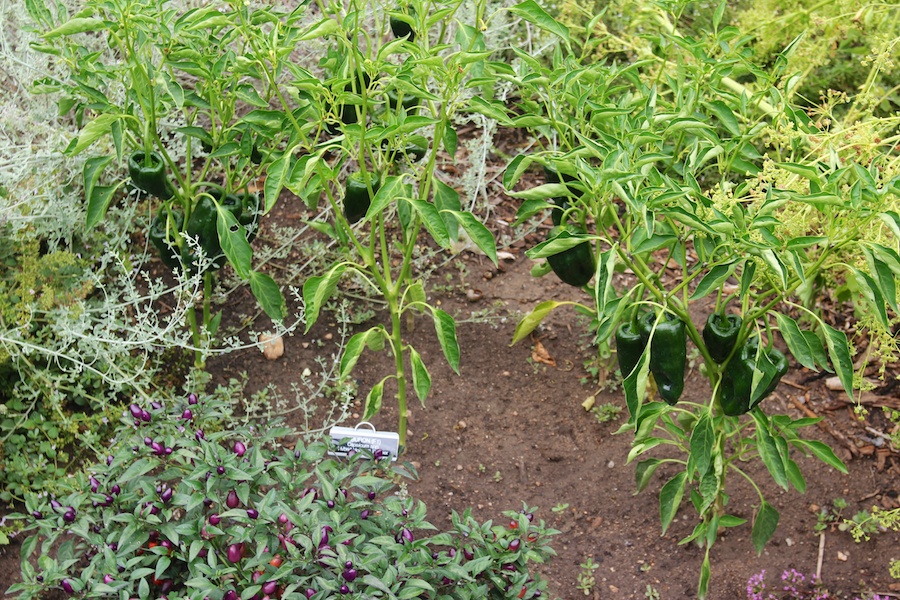
Pabalanos... Yummy
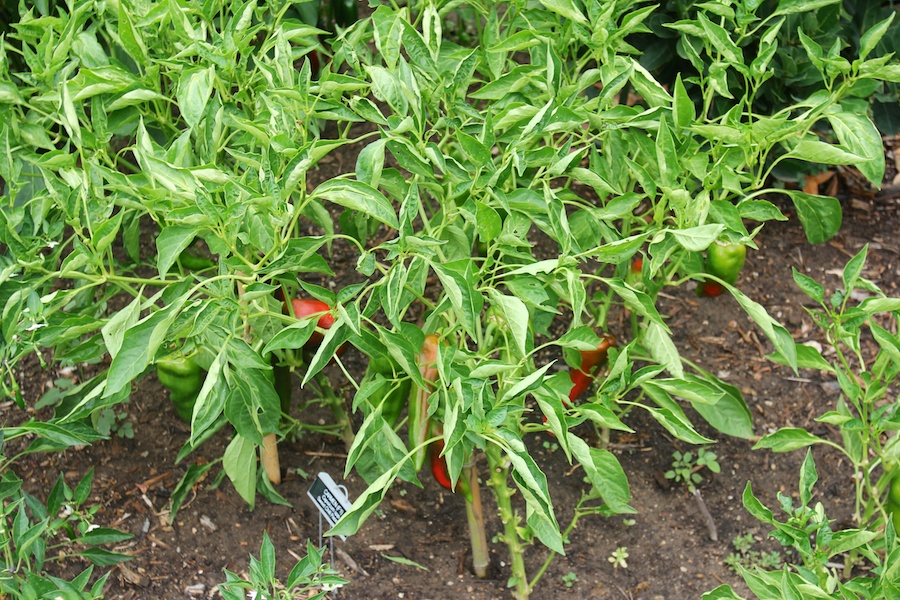
Now we are talking hot
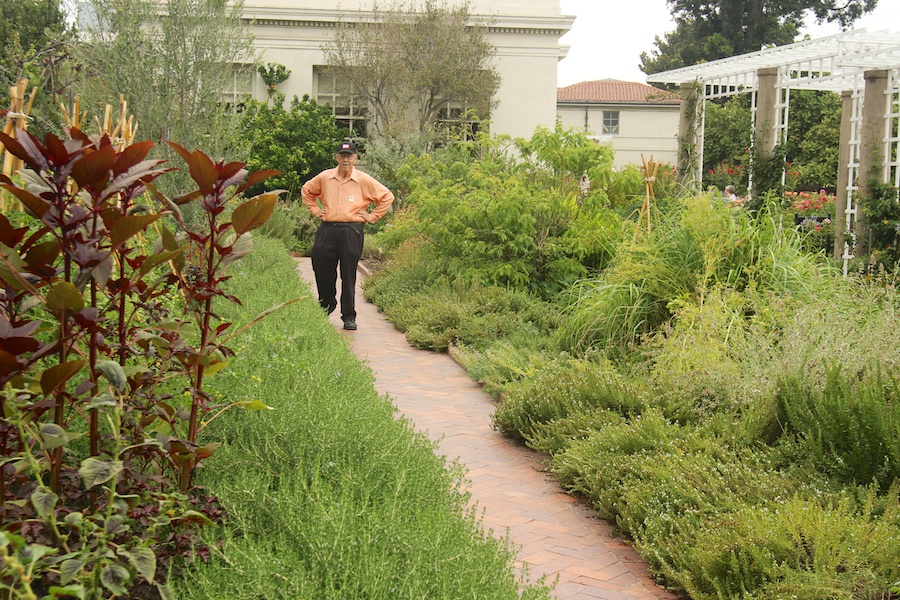
Greg does a careful examination of the garden
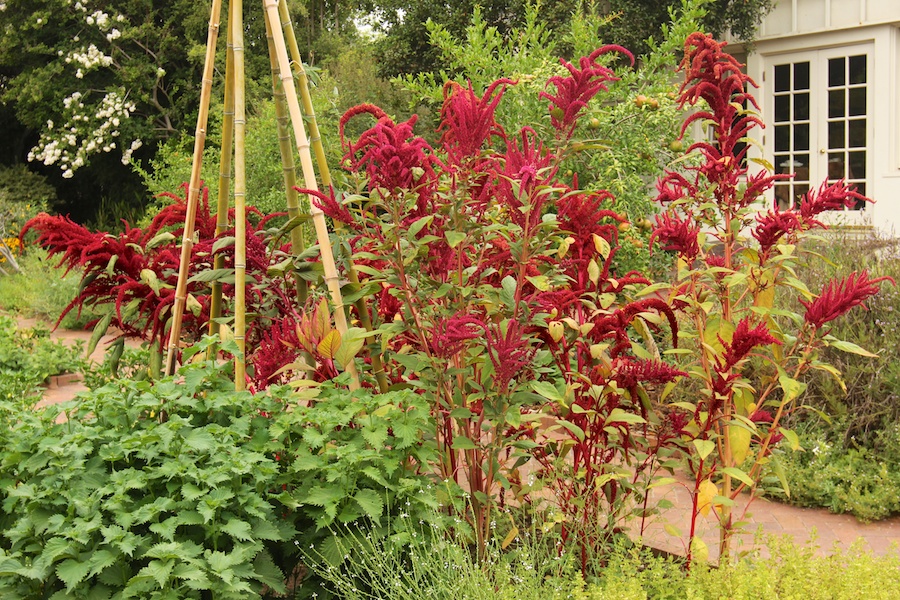
Reds and greens made it look like Christmas
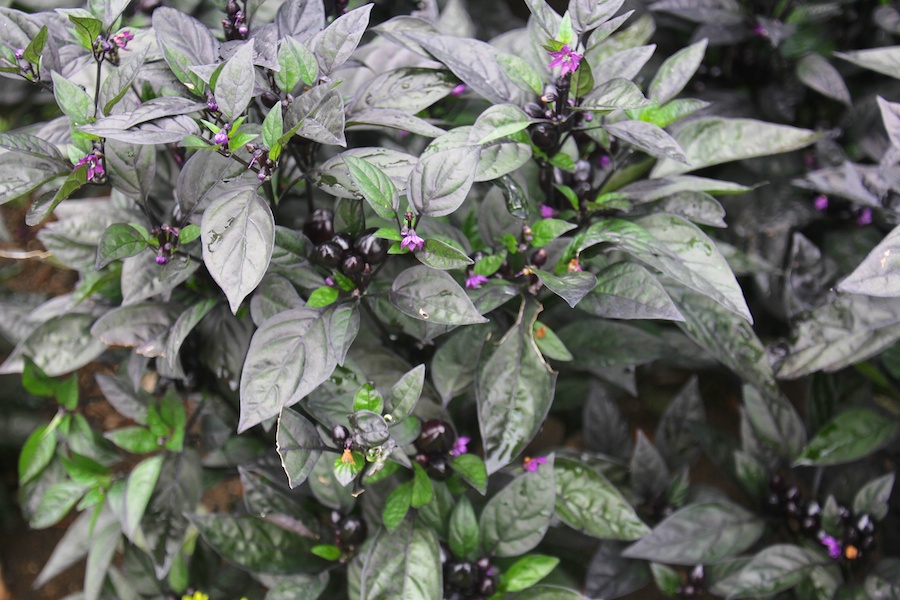
Basil with berries???
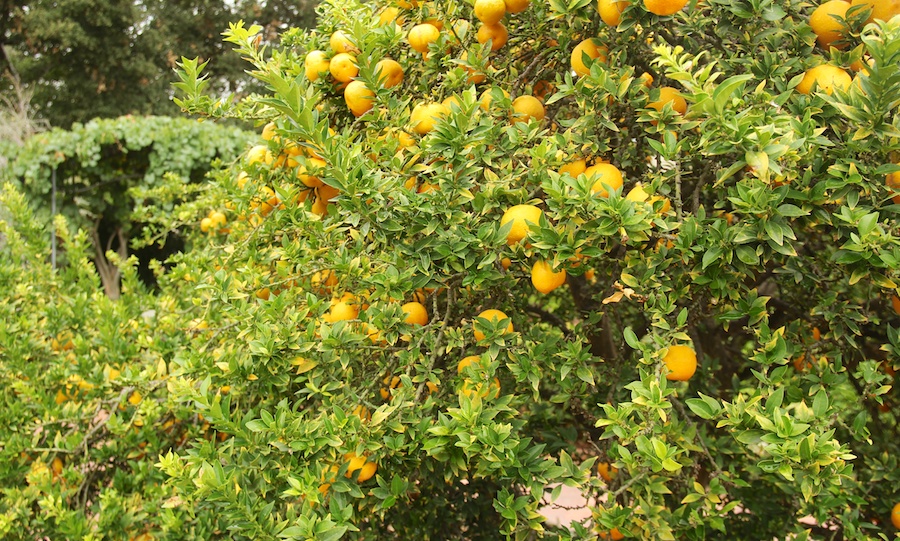
The miniature orange tree was loaded
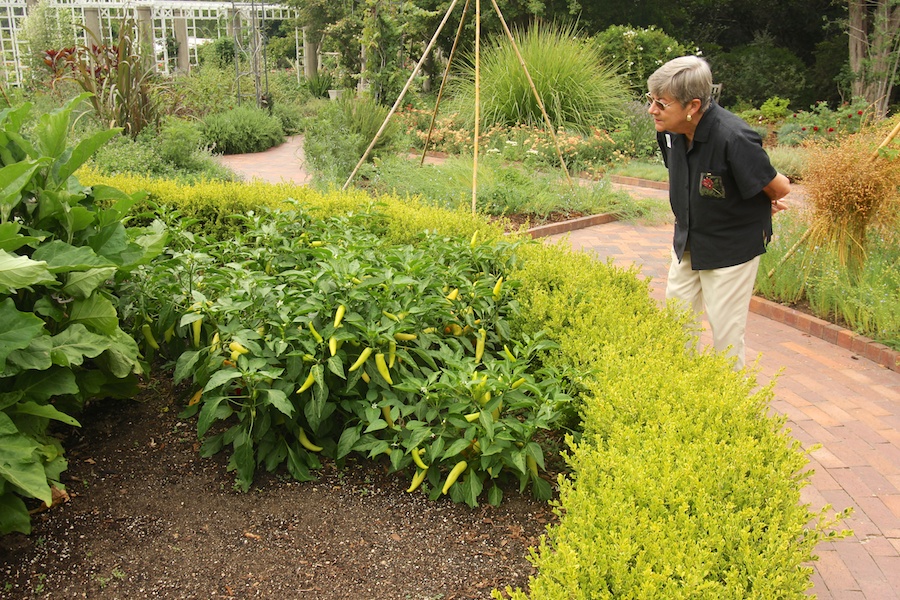
Sue loved seeing the peppers
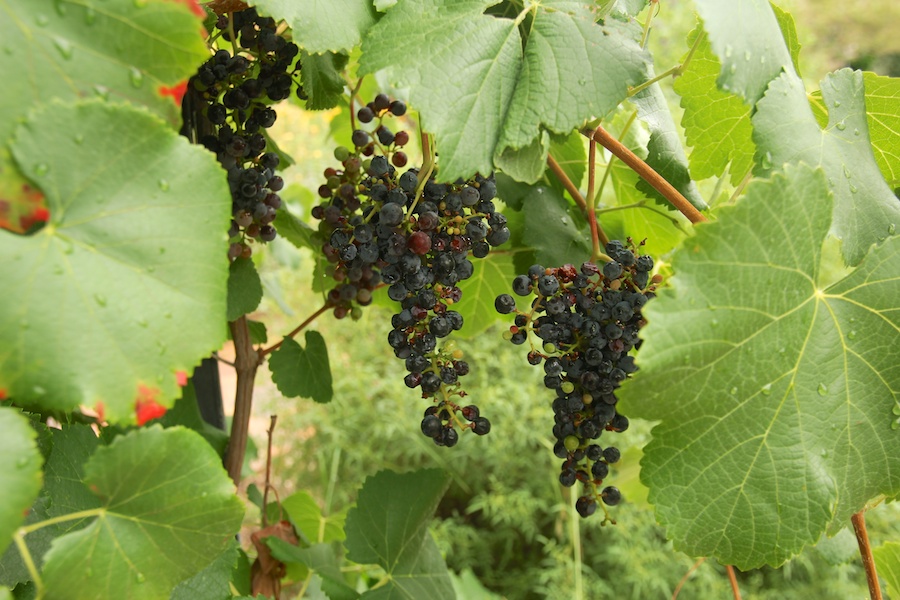
Their grapes also had mildew damage

The trees were in full blossom
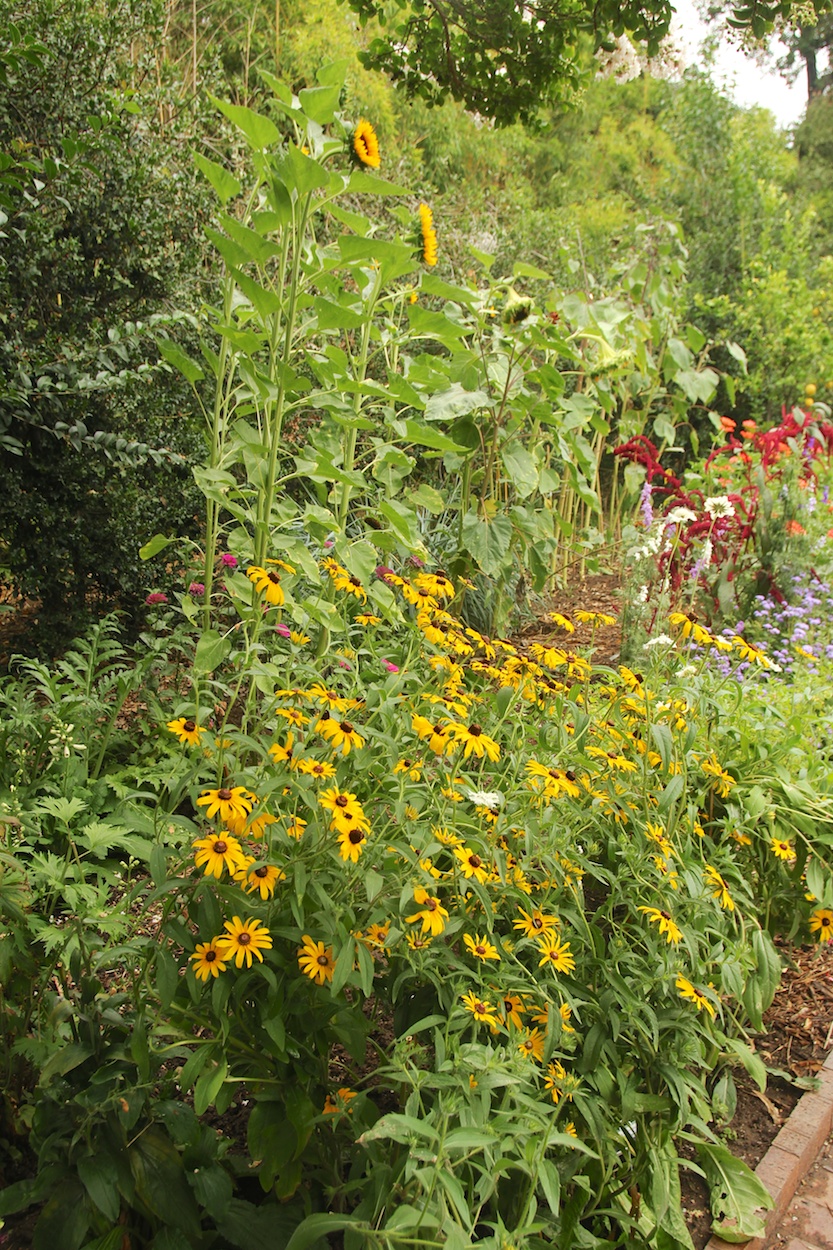
The sunflowers were quite tall... Probably 8-9 feet
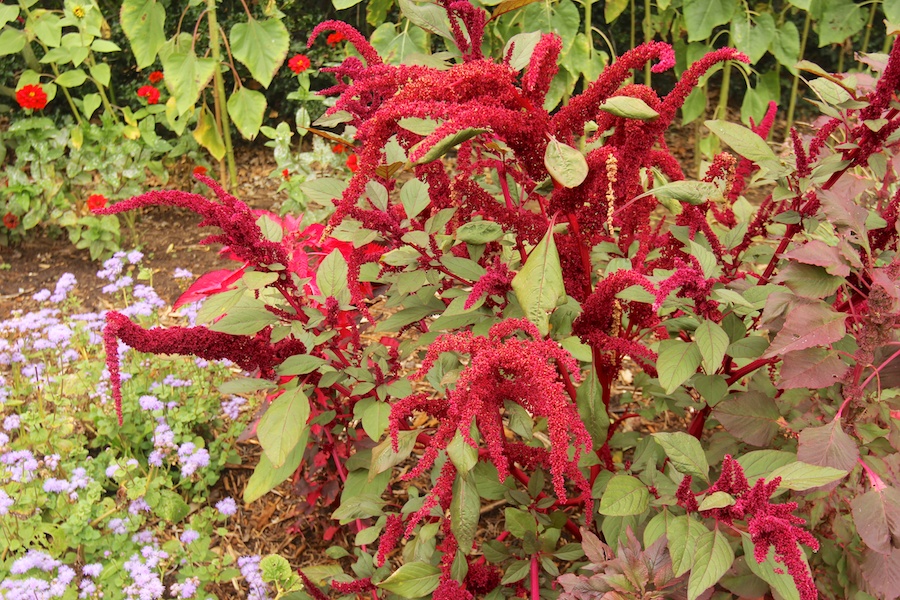
Simply amazing....
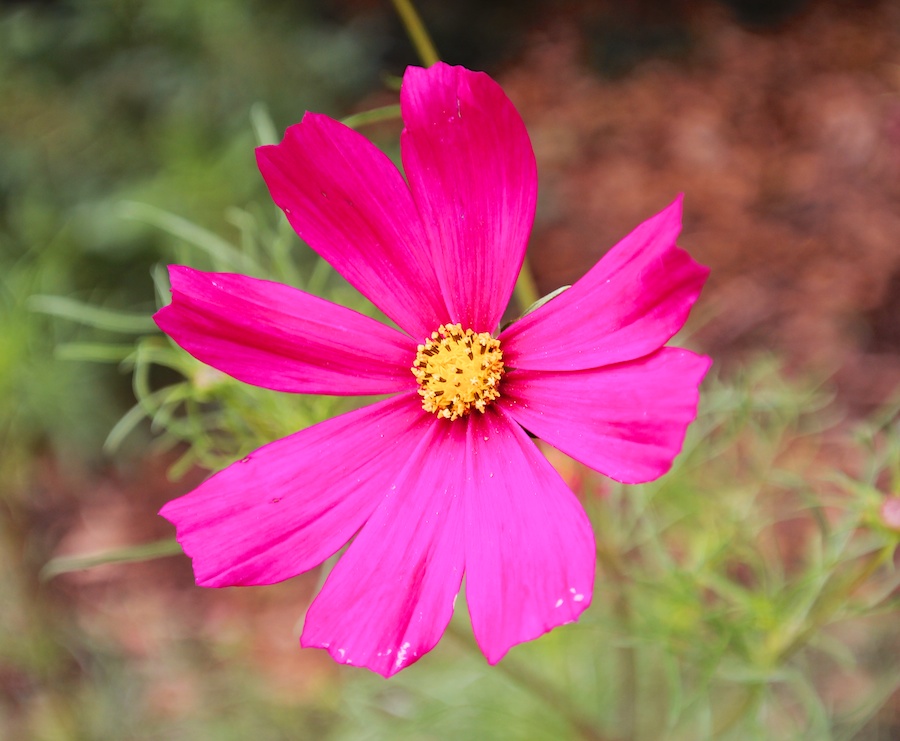
It was loud you could hear it before you saw it
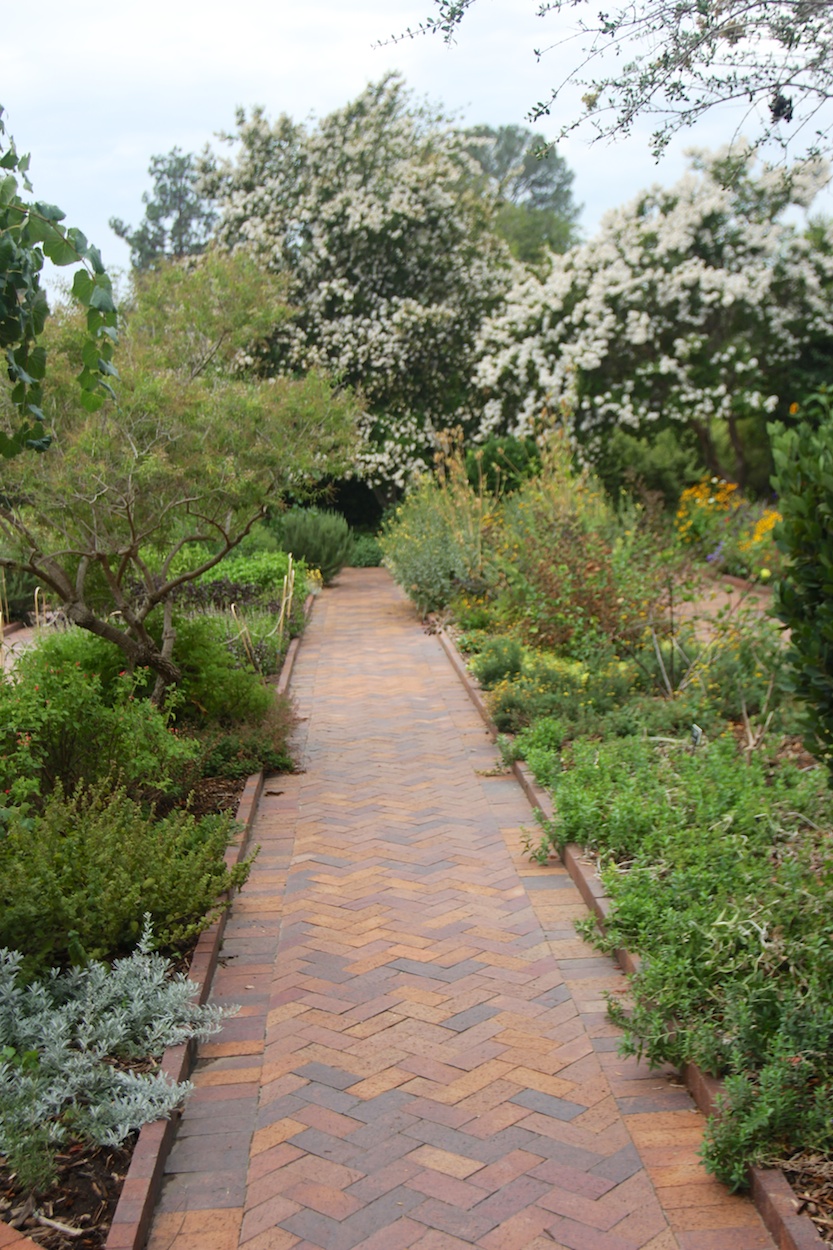
The planters were in great shape
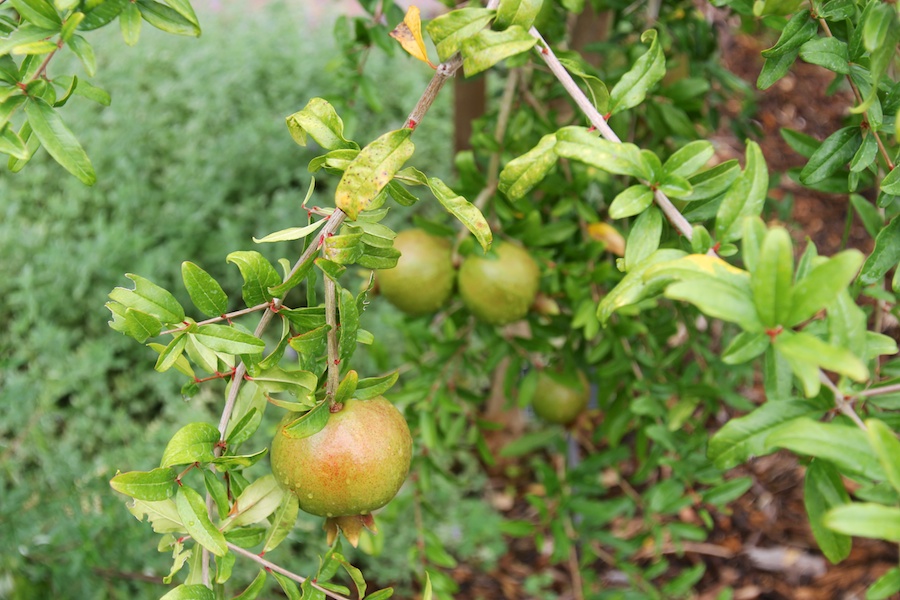
Pomegranates were developing
Did You Know? - The pomegranate /?p?m??r?n?t/, botanical name Punica granatum, is a fruit-bearing deciduous shrub or small tree growing between 5?8 meters (16?26 ft) tall. In the Northern Hemisphere, the fruit is typically in season from September to February, and in the Southern Hemisphere from March to May. Pomegranates are used in cooking, baking, juices, smoothies and alcoholic beverages, such as martinis and wine.
The pomegranate is considered to have originated in the region of Iran to northern India and has been cultivated since ancient times.
It is mentioned in many ancient texts, notably in Babylonian texts and the Book of Exodus.
It was introduced into Latin America and California by Spanish settlers in 1769.
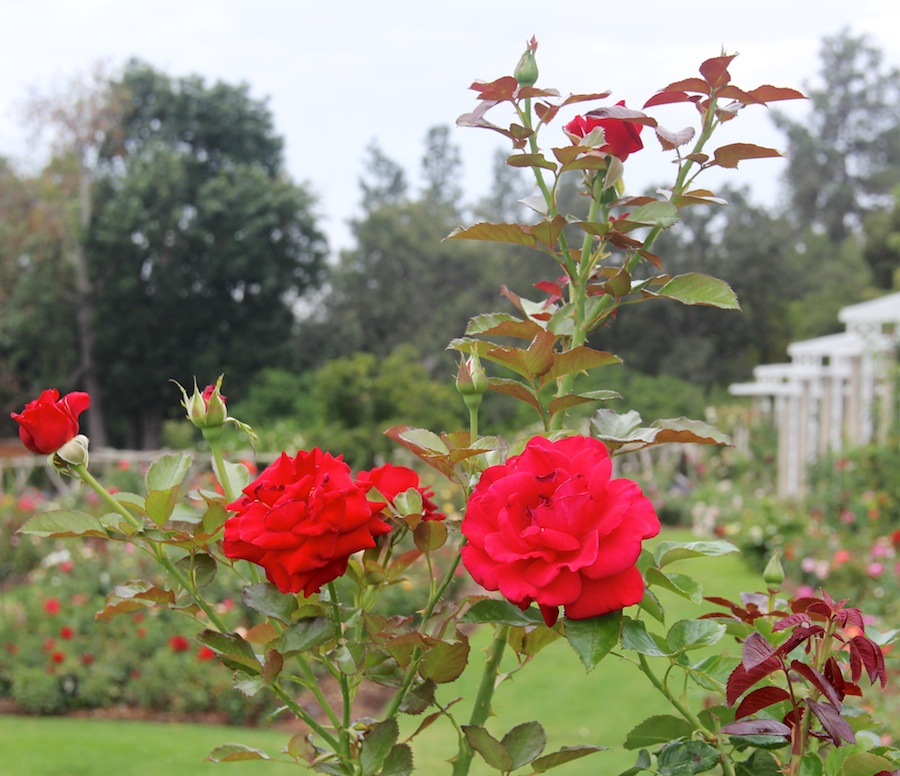
OK.... Time to eat
